As we arrived in our anchorage in Porto Santo by night and in the dark we had really no idea about how this place would look like. We discovered the surroundings of our anchorage only the next morning. Arrivals by night are actually a very funny experience; we could be anchoring in an ugly industrial place or in crystal clear waters along a paradise island – we wouldn’t know it until daylight when we open the boat hatch and look around like suricats. In just a few second we get to see how the place looks like. It is like unwrapping a gift on Christmas day. What we discovered in Porto Santo was a several kilometers long sand beach with turquoise waters clear enough to let us see all the details of the sandy bottom standing nine meters below the surface. We also saw high hills, the same hills we spotted when we still had 40 nautical miles to go. What a magic place !
To celebrate this new step in our sailing adventure we gave Lovisa a new fresh Swedish ensign to replace the one that had been slowly tearing apart since we left Sweden.
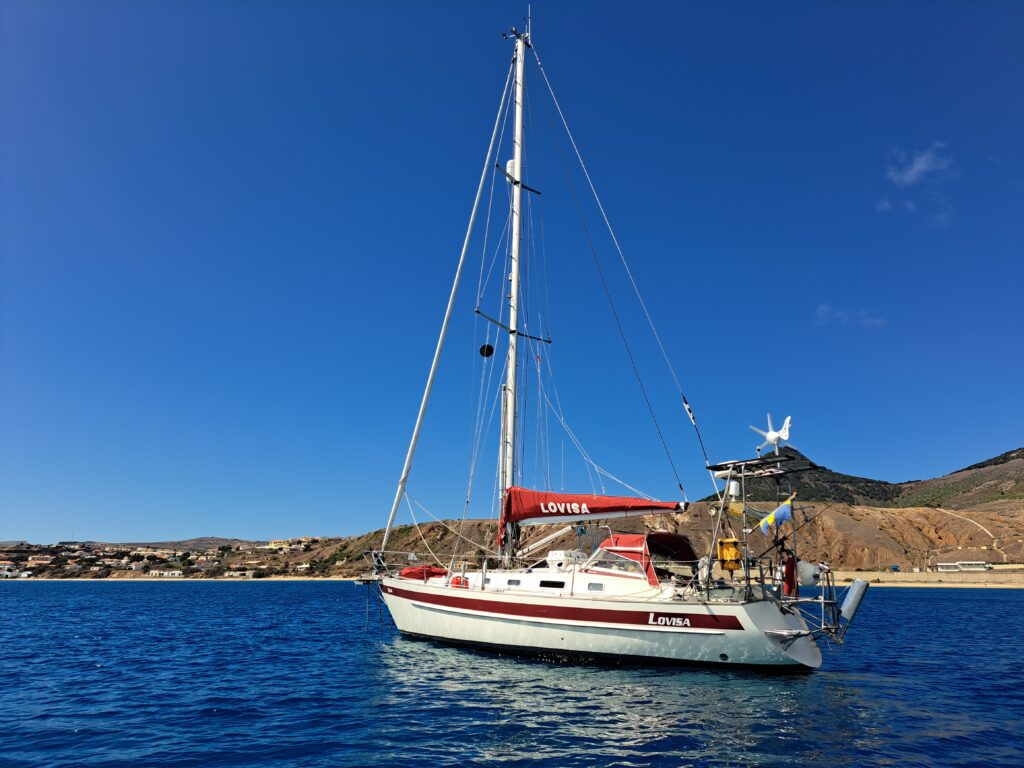
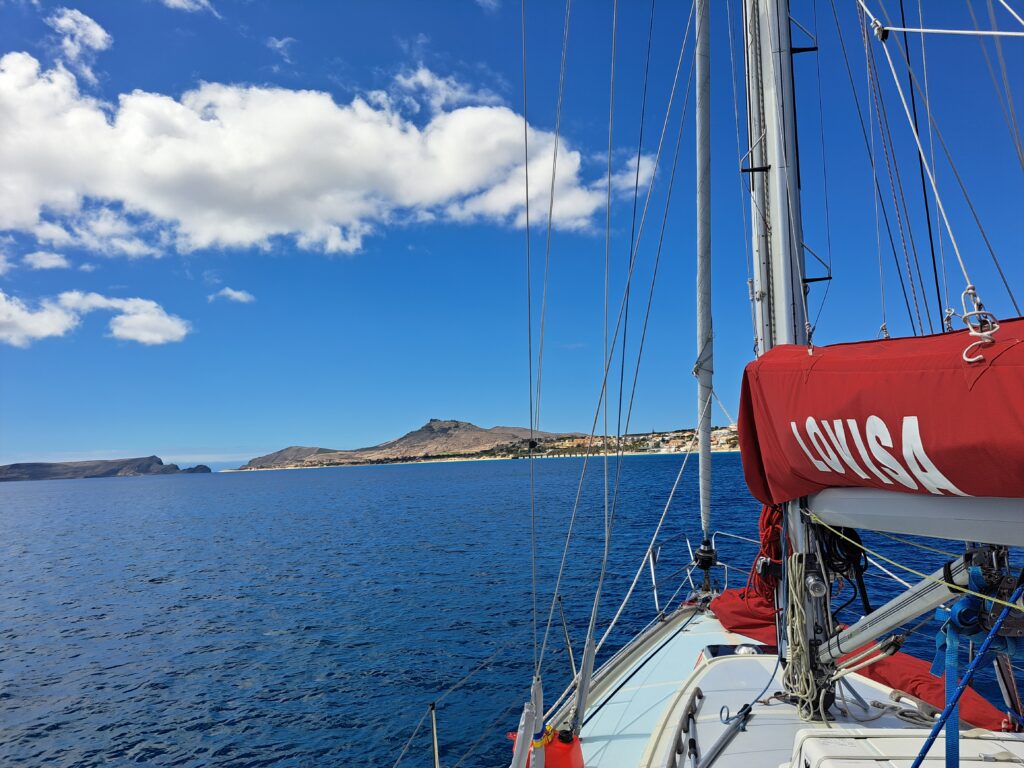
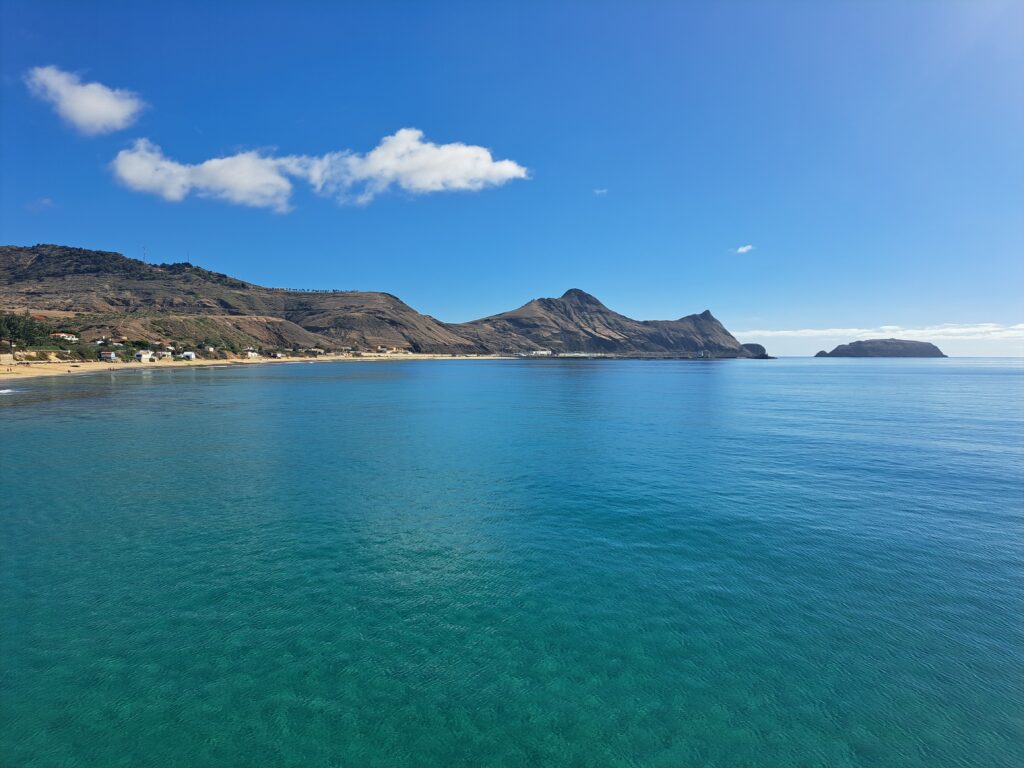
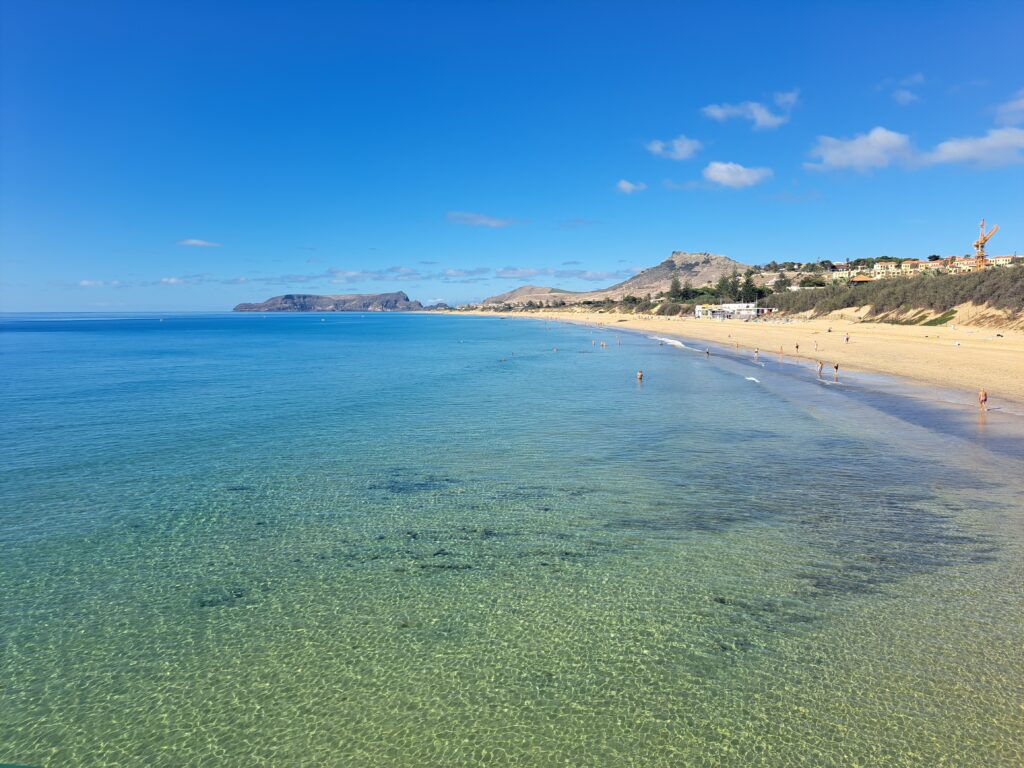
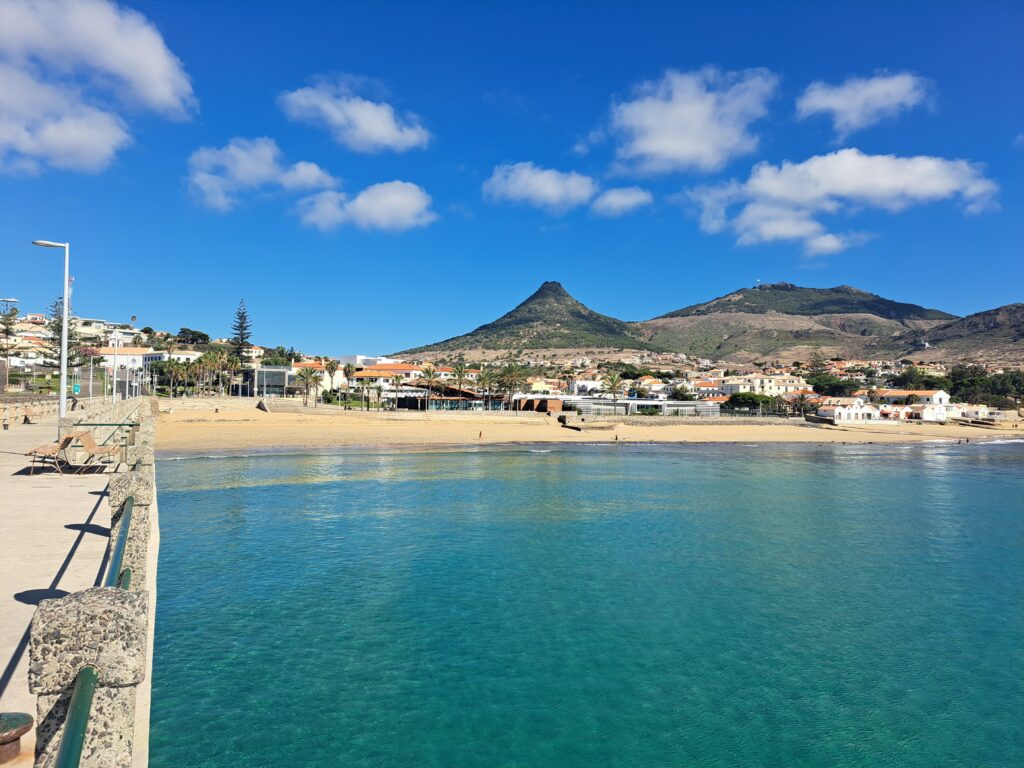
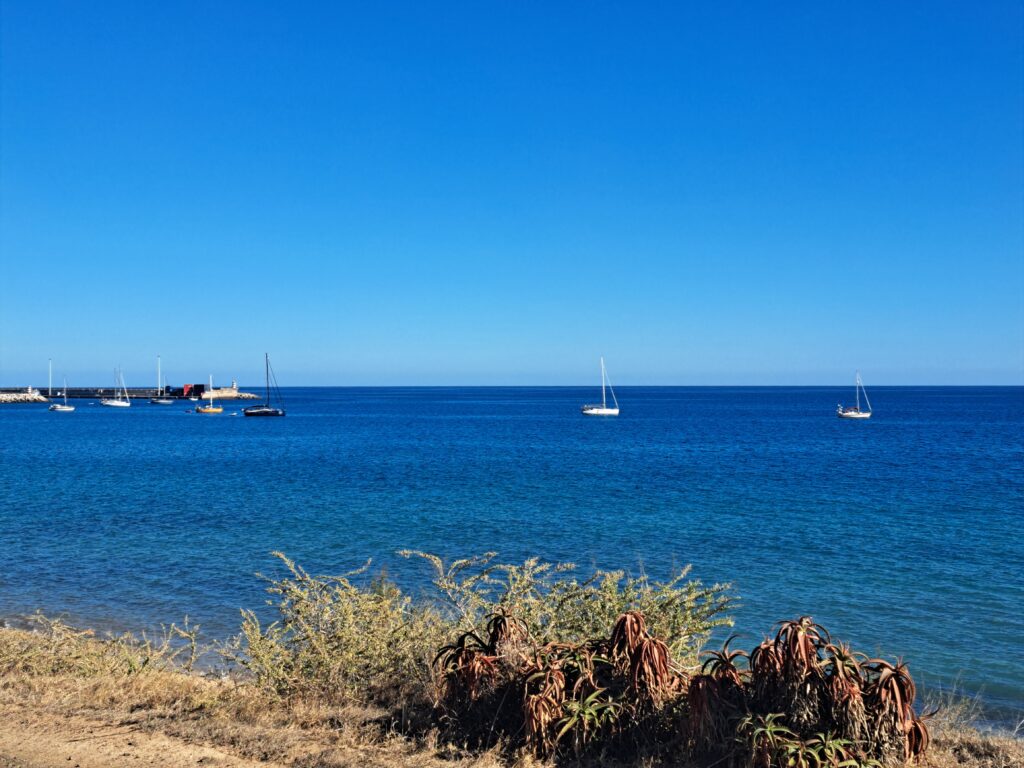
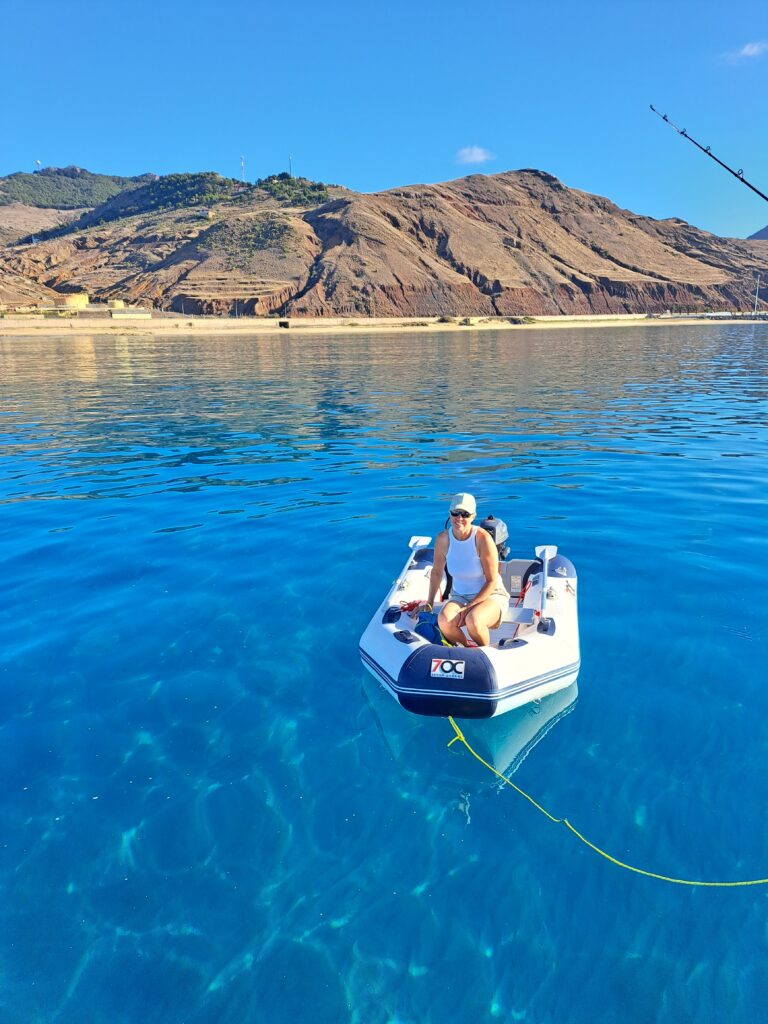
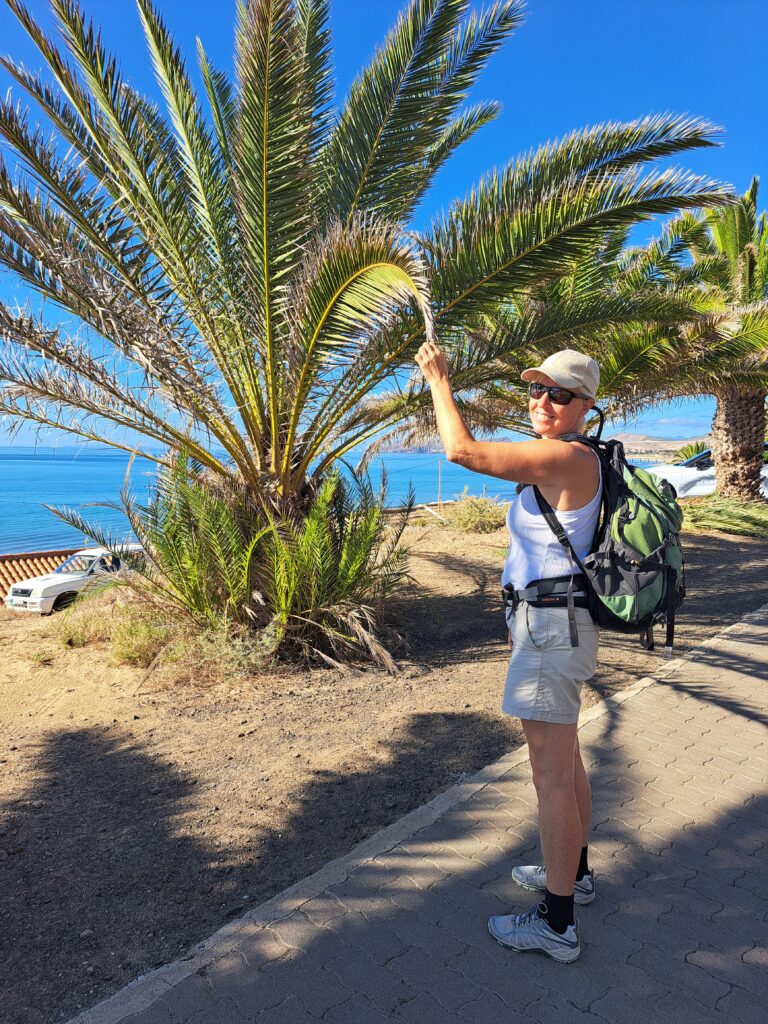
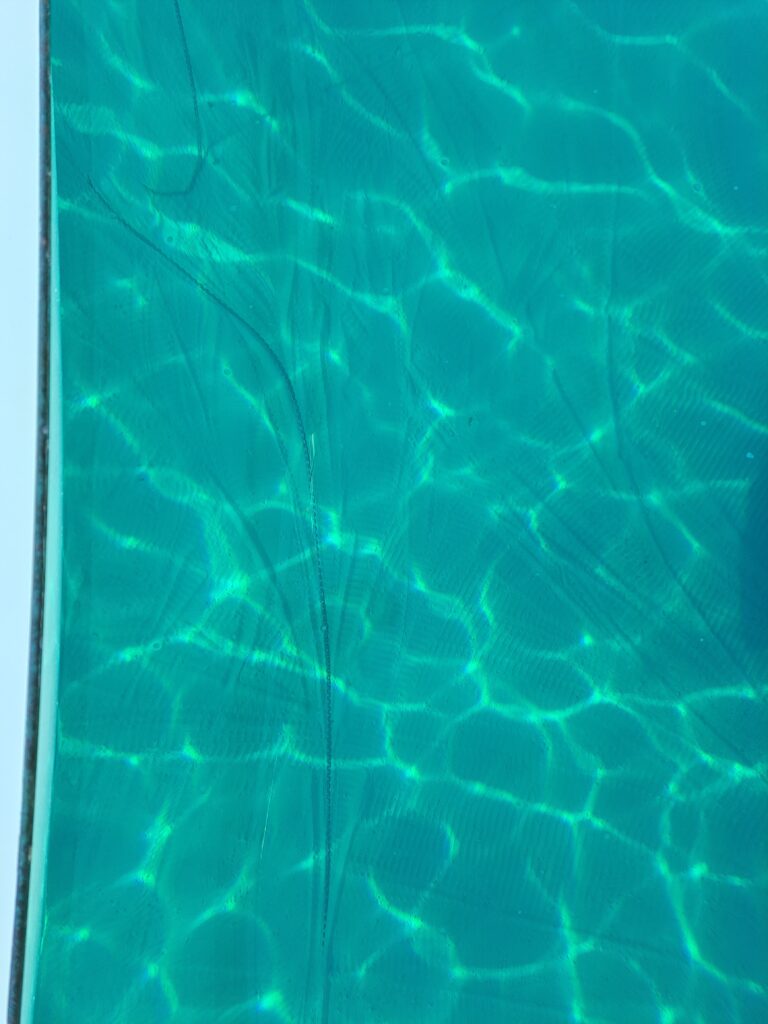
We spent 6 days on anchor in Porto Santo near the marina and spent a big part of our time there walking around. One day we took long walk from the marina to Porto da Salemas located on the north side of the island. Porto Salemas is a narrow beach squeezed between the cliffs and famous on the island for its natural pools: These natural pools are rock formations that create basins that retain the water at low tide to become pools. On the way back to the marina we walked via the trail that leads to Pico Castelo and could enjoy a spectacular view over the south coast of Porto Santo.
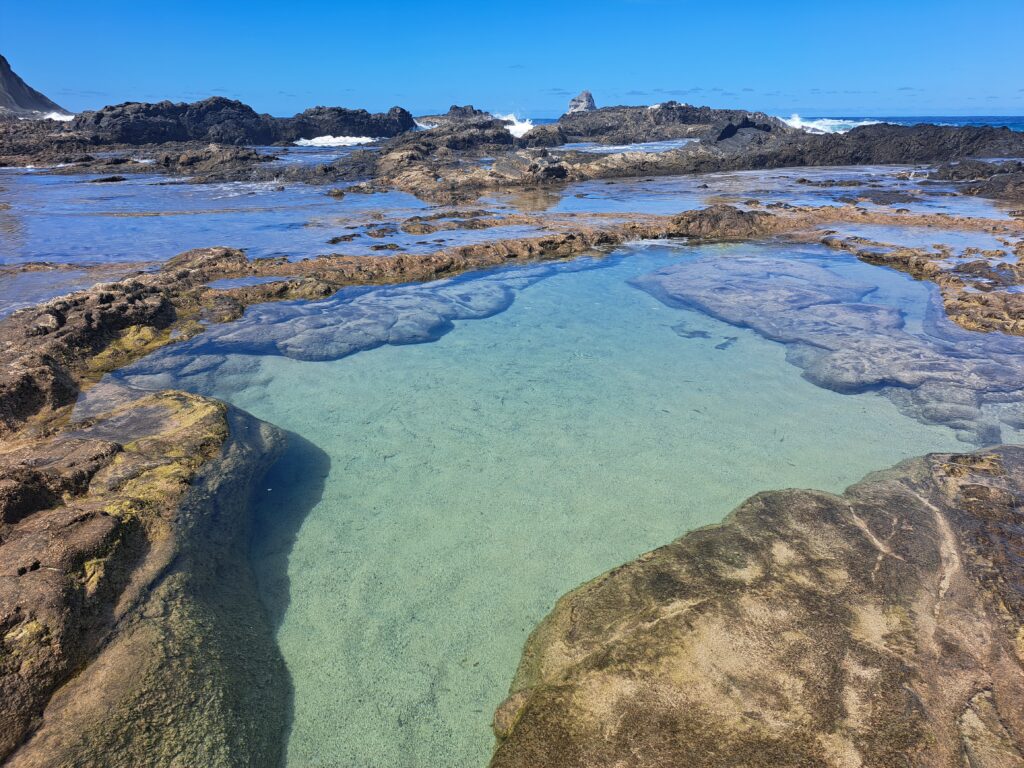
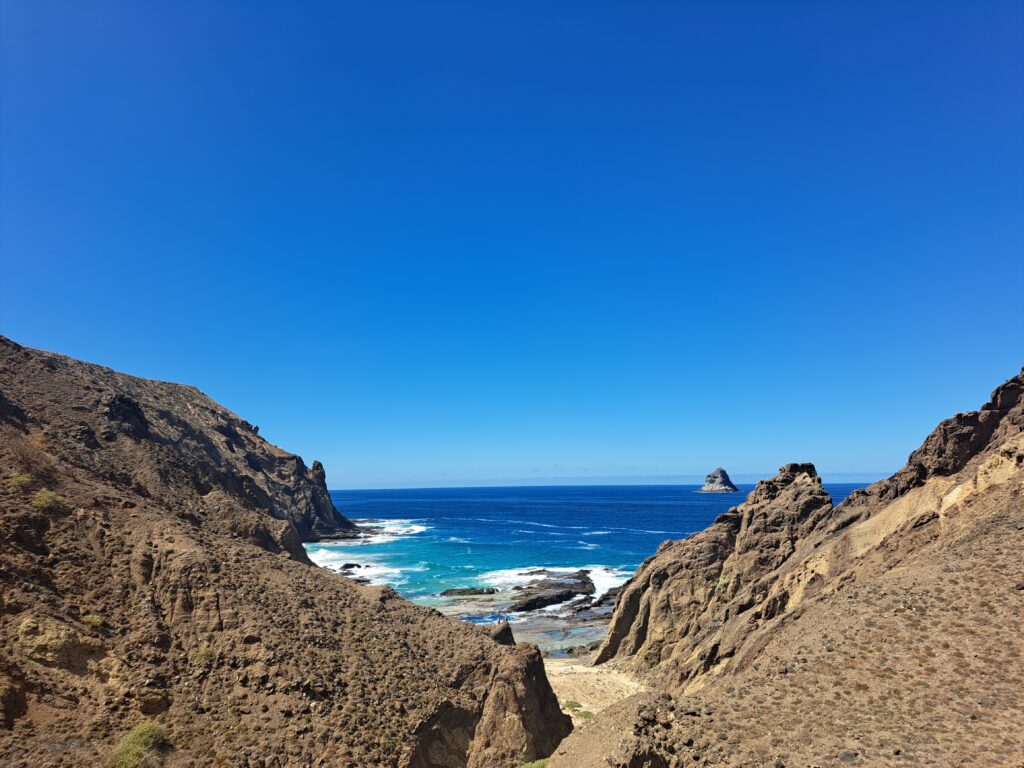
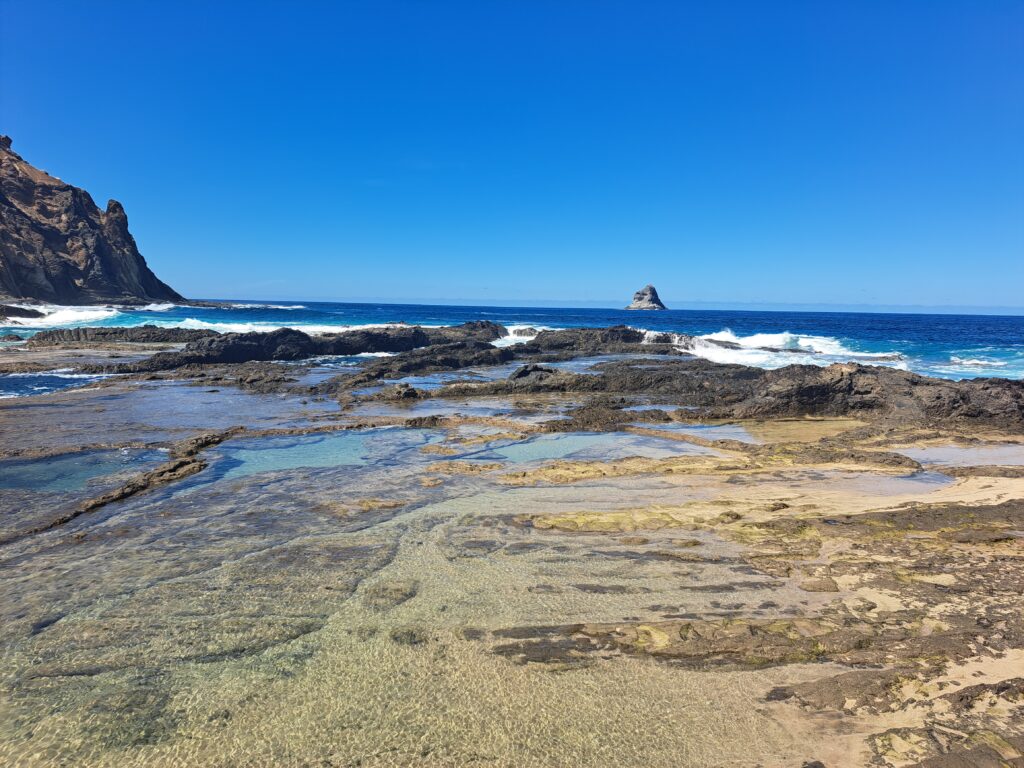
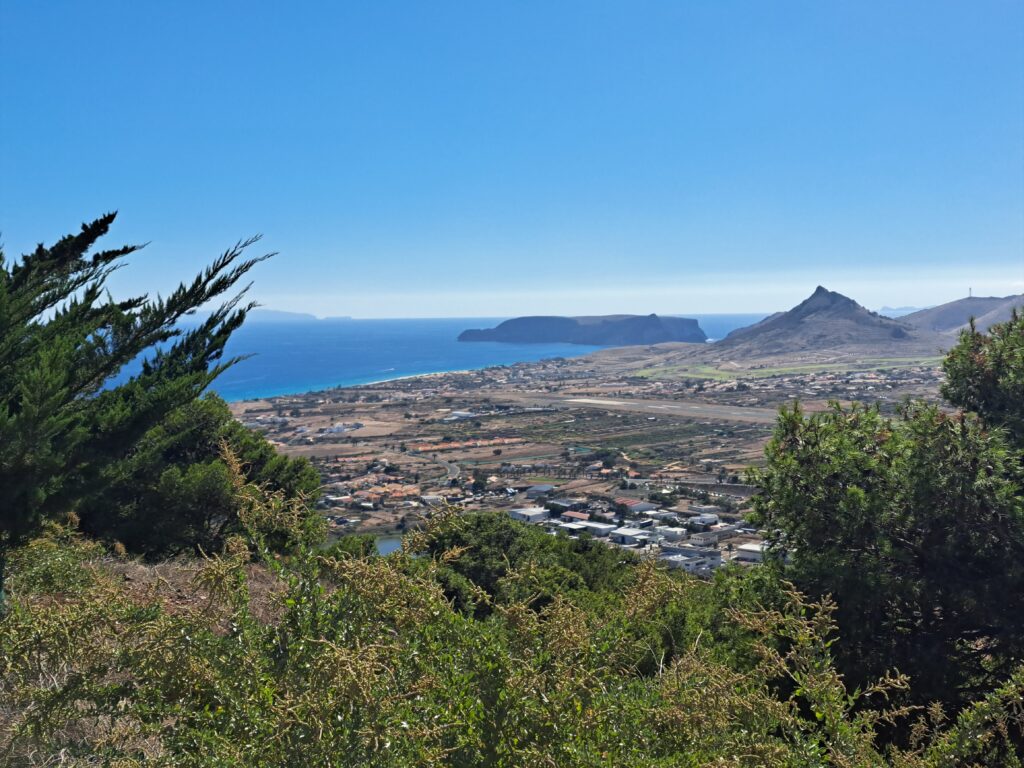
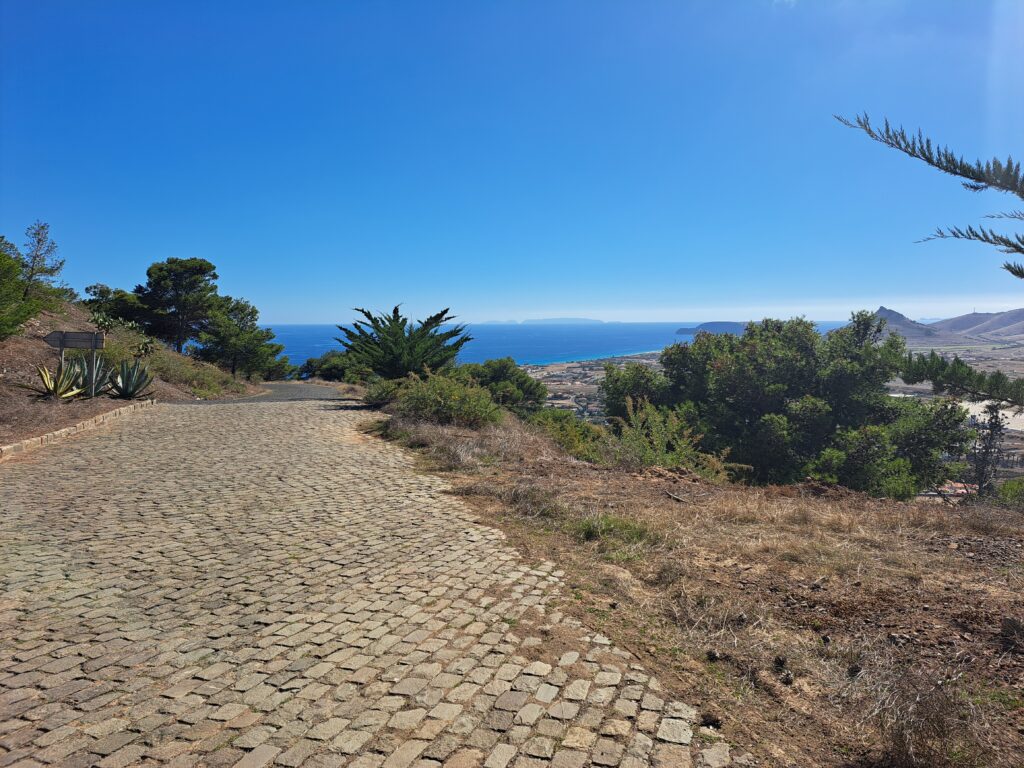
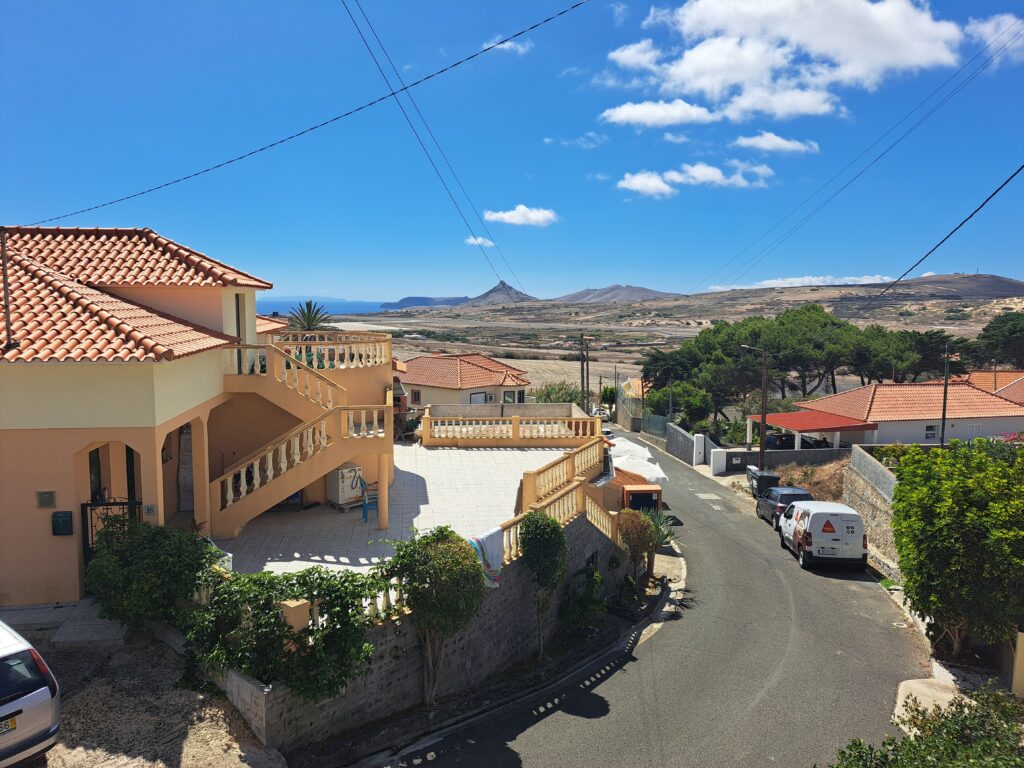
The southern coast of the island is basically a long beach that stretches from the Marina until the western tip of the island. That paradise beach ends with a sign “Danger strong currents”. The very end of the beach faces a small island that is separated only by a small strip of water in which huge waves enter and collapse.
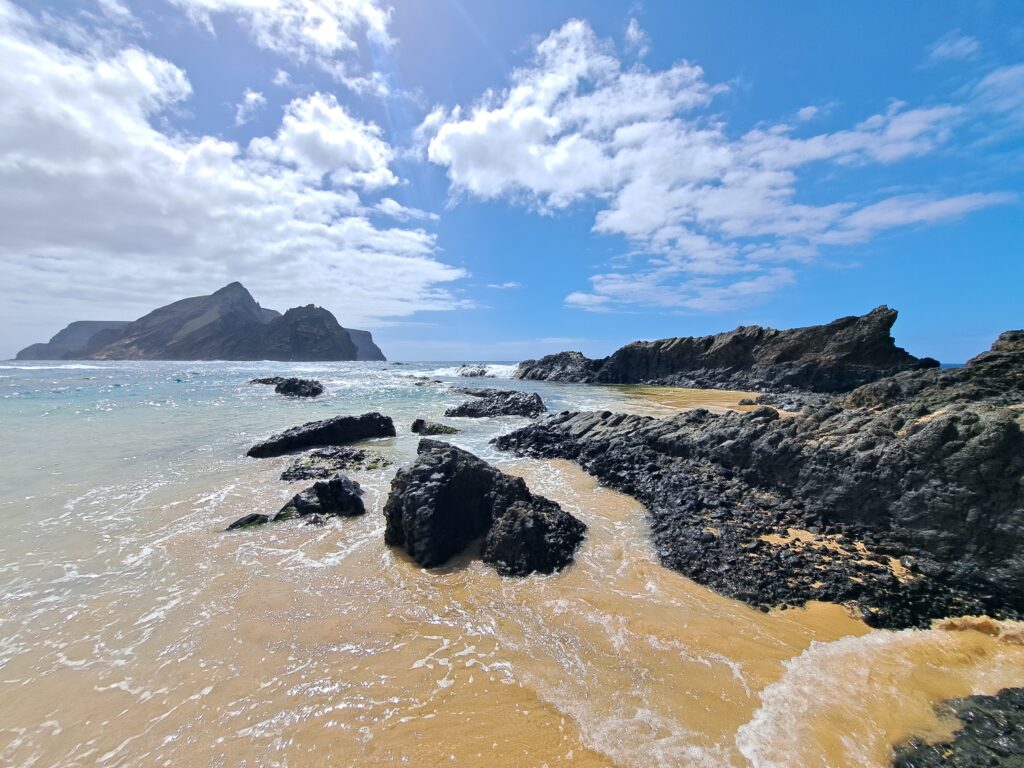
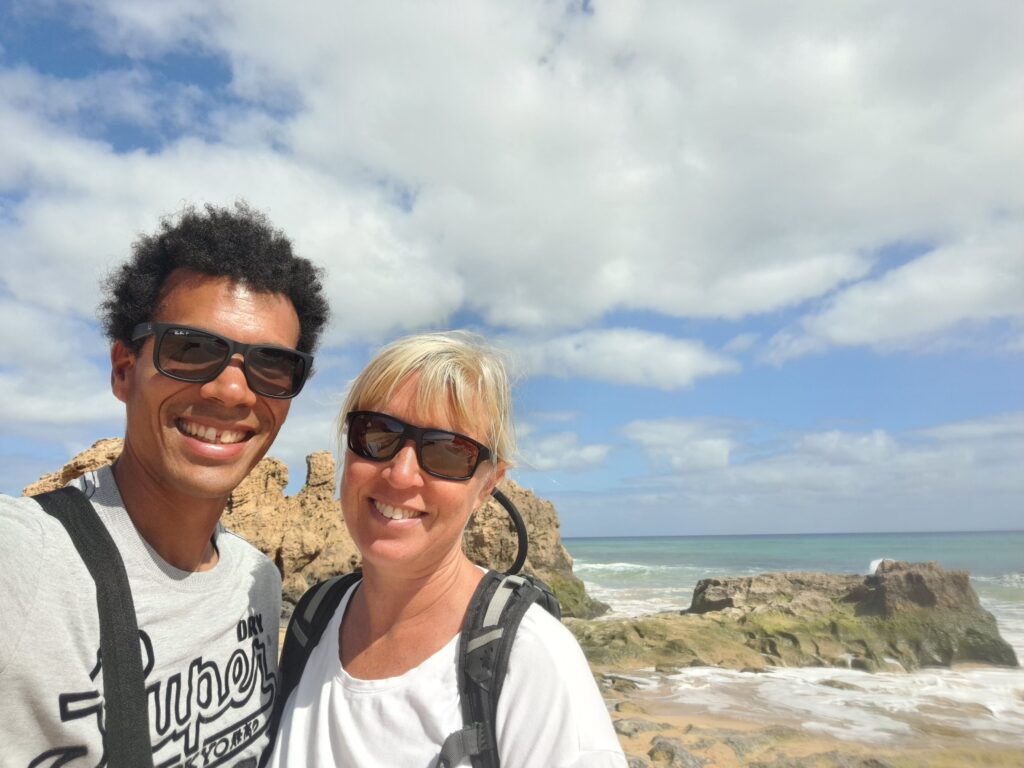
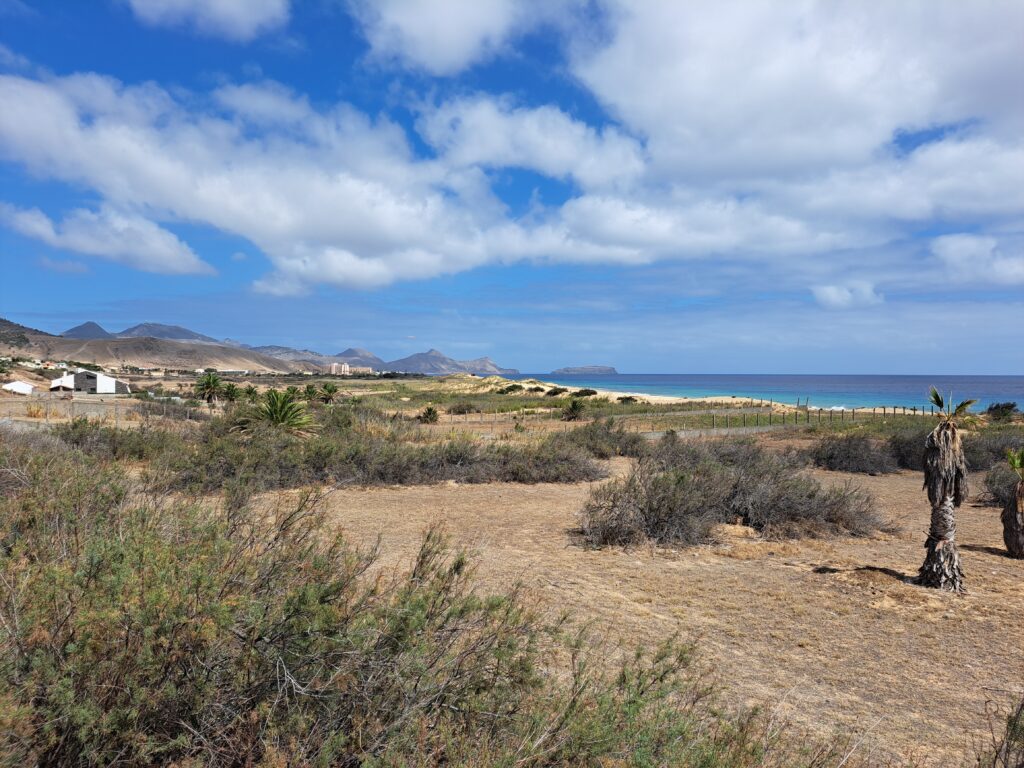
We managed to get some boat work done between our excursions and completed the cabling of the hydro generator. As we were expecting, during the crossing from Cascais to Porto Santo, our daily energy consumption was higher than the energy we could generate with the solar panels and the wind generator combined. The wind generator doesn’t perform well when the boat is rolling; the turbine should normally be facing the wind to produce electricity but the rolling makes the turbine rotate around its own axis. Sometime it even ends up in the opposite direction from the wind. Therefore, the wind generator had been only generating electricity in peaks, when the turbine happens to be in the right direction for a few seconds … until the next roll.
On Tuesday (September 30), after 6 nights, we left our anchorage and headed towards Quinta de Lorde, 30 nautical miles away on the main island of Madeira. Out of the 6 nights on anchorage, 2 were actually quite painful: end of September, post-tropical cyclone Gabrielle reached the coasts of Azores then Portugal mainland after crossing the Atlantic sending also some higher waves towards Madeira making our anchorage very bouncy. It became just impossible to sleep. After two sleepless nights, sailing forwards towards Madeira main island and stopping in a harbour became a liberation.
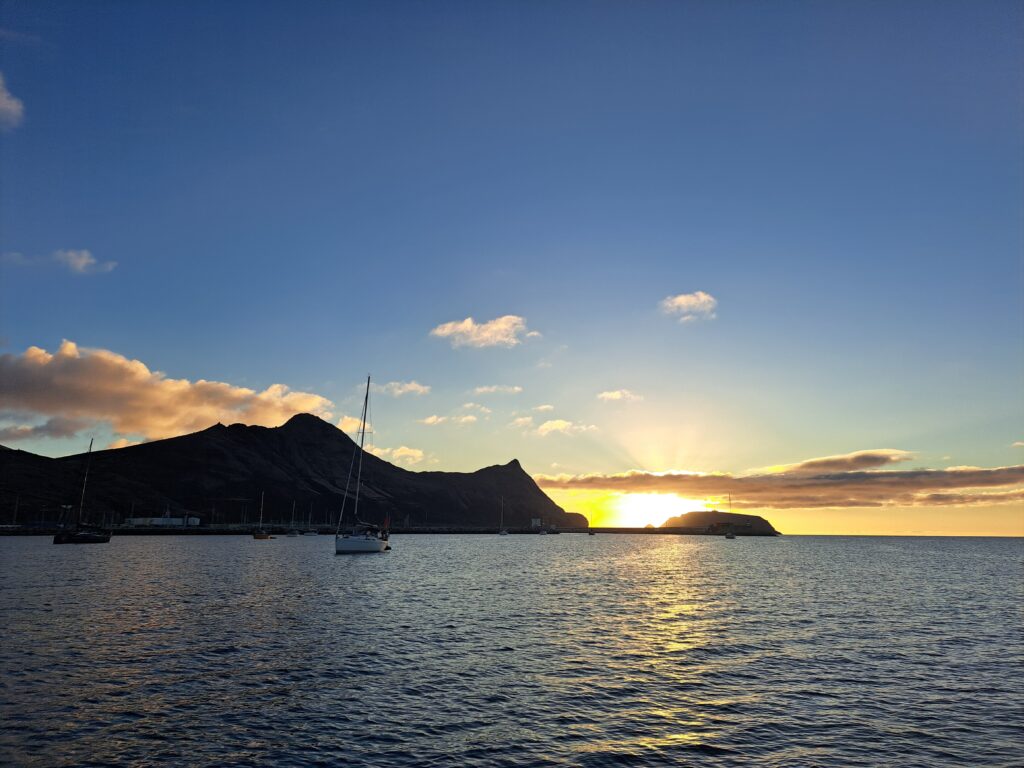
The sail to Quinta do Lorde was smooth but a bit rolling with northerly winds varying between 6 and 9 m/s and also varying a lot in direction. Marina Quinta do Lorde, our destination, is incastrated at the bottom of a hill within a resort complex. The view when arriving from the sea is pitoresque: a small village on the border of the sea surrounded by dry hills.
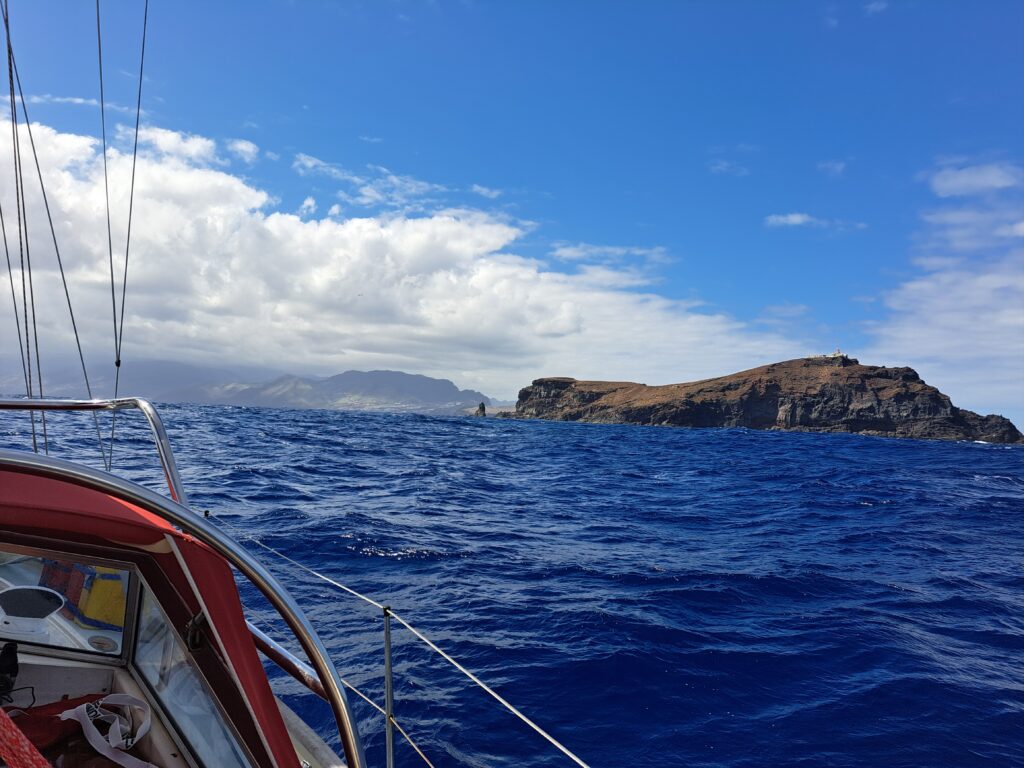
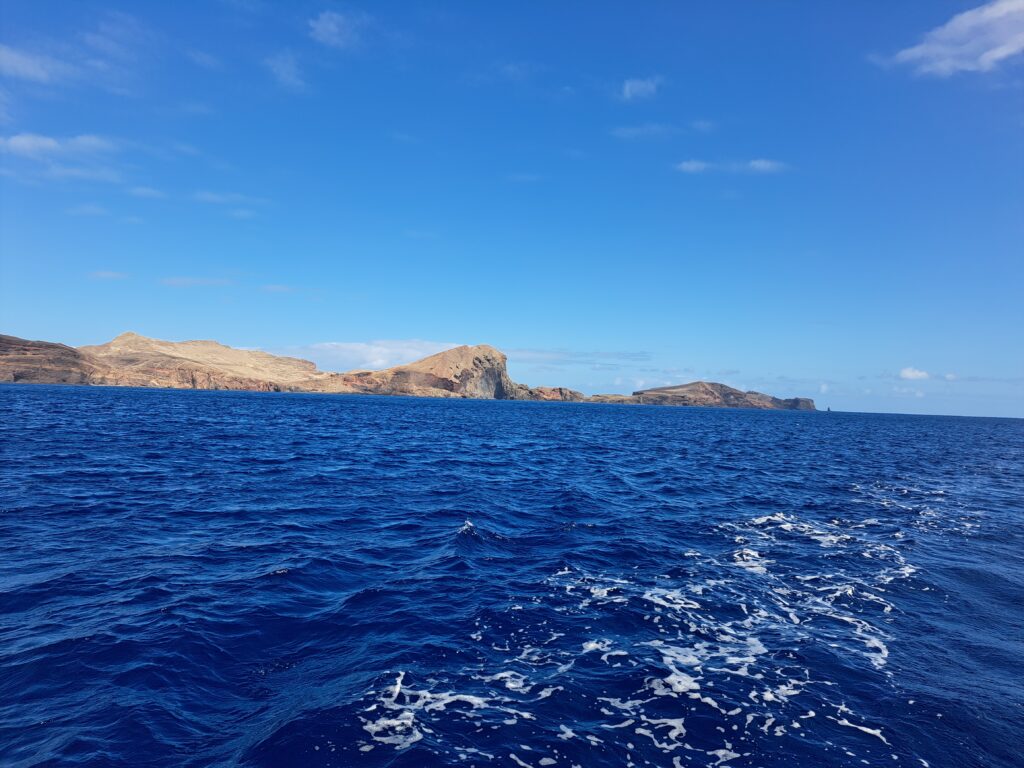
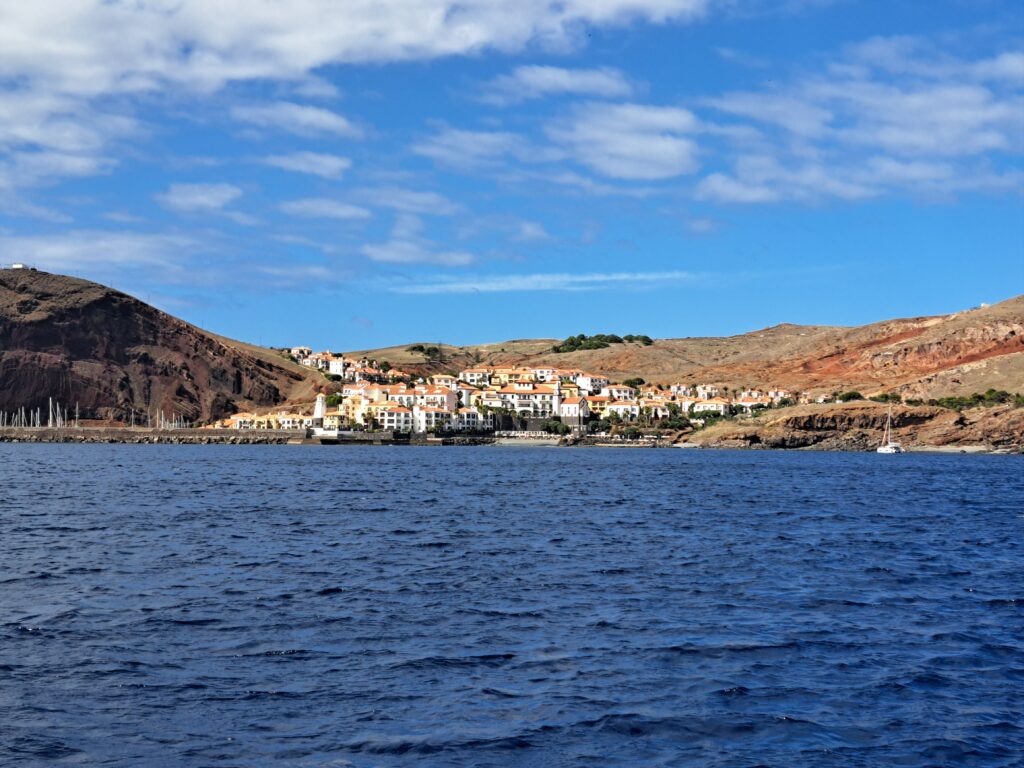
We reached the harbour mid afternoon and enjoyed an evening with other sailors from S/Y L’Aventure 3, S/Y Texas White Lady and S/Y Marey who were also in that marina. And finally we could enjoy a night on a boat completely standstill and silent. Not only the batteries of the boat needed a recharge, the crew as well.
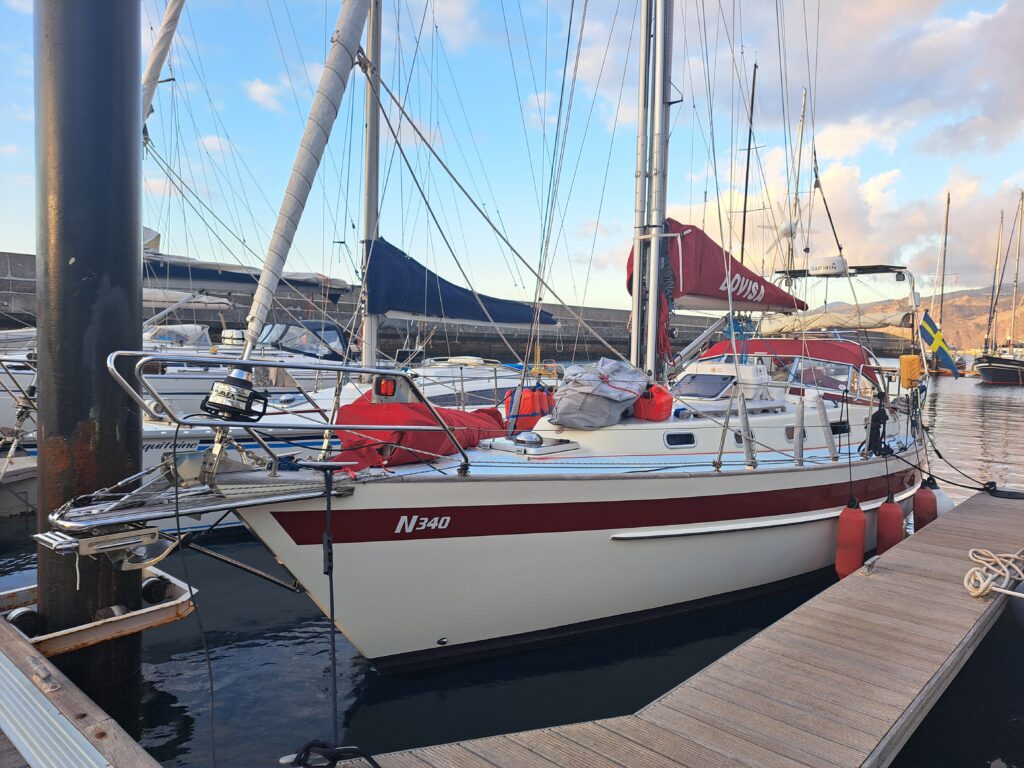
Sailing is not a very active sport. We can be sitting for hours without doing real physical activity apart from holding us where we can when the boat is rolling crazy. So when are visiting a place, every opportunity to walk or exercise is good. Madeira was the right destination to get some motion. We discovered that Madeira was actually a known hiking destination. In contrast with Porto Santo, the main island of Madeira has a very rich nature with many trails. The only thing you should maybed not expect on Madeira is a long sand beach. For that it is maybe better to stay in Porto Santo.
During the first day of our stay on Porto Santo, we took a long walk with our friends from S/Y L’Aventure 3 along a trail called “Vereda da Ponta de São Lourenço”. It was starting only a few hundred meters from the marina, running towards the eastern tip of the island through a very rough and dry landscape, in contrast with the rest of the island that is very green.
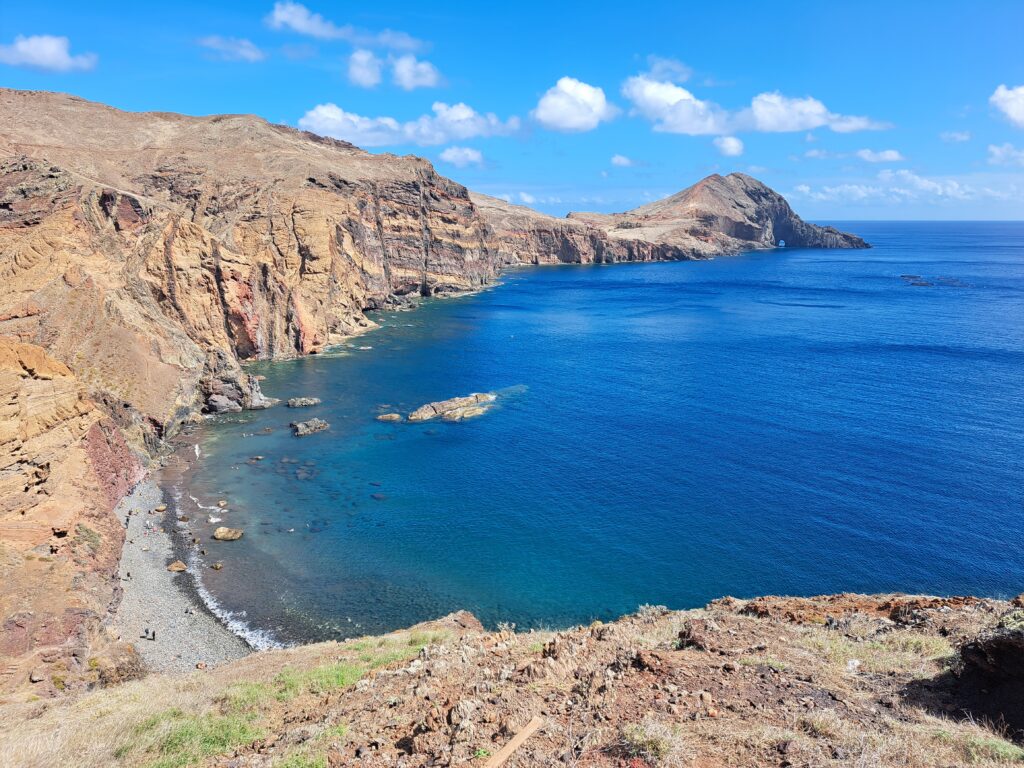
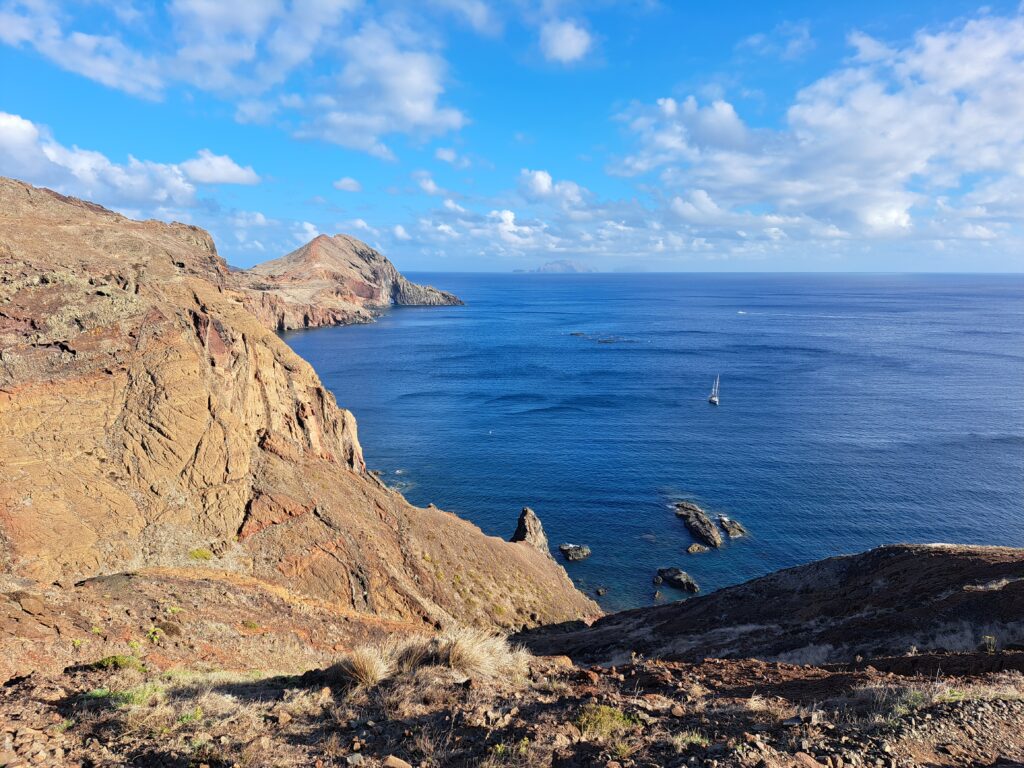
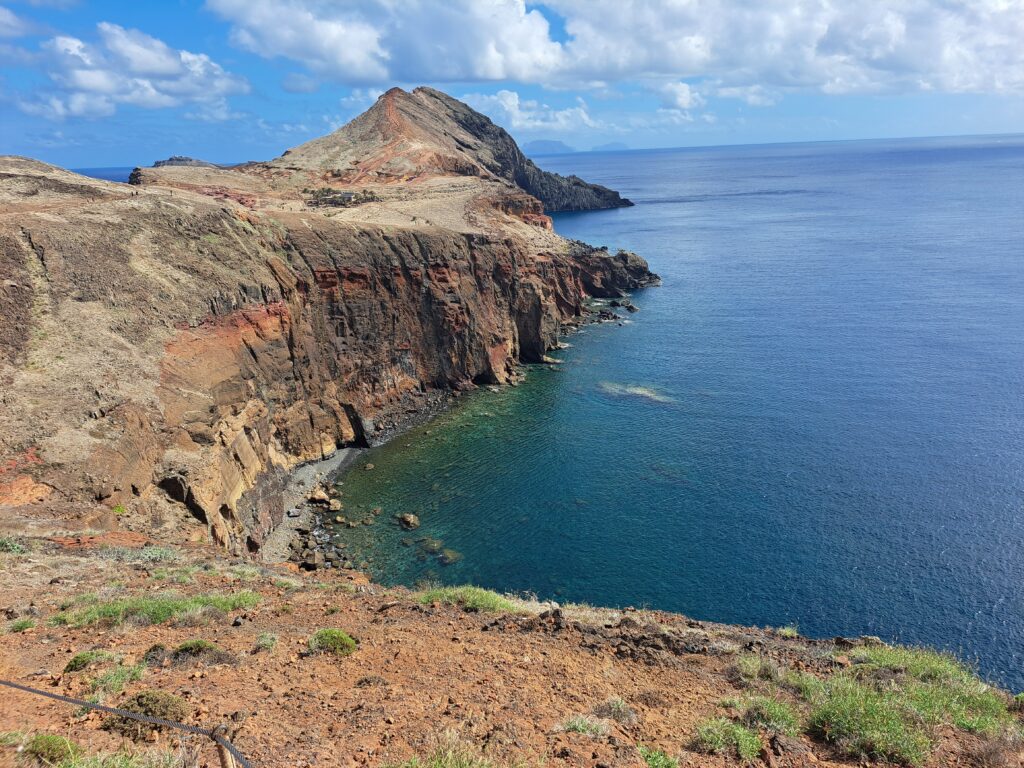
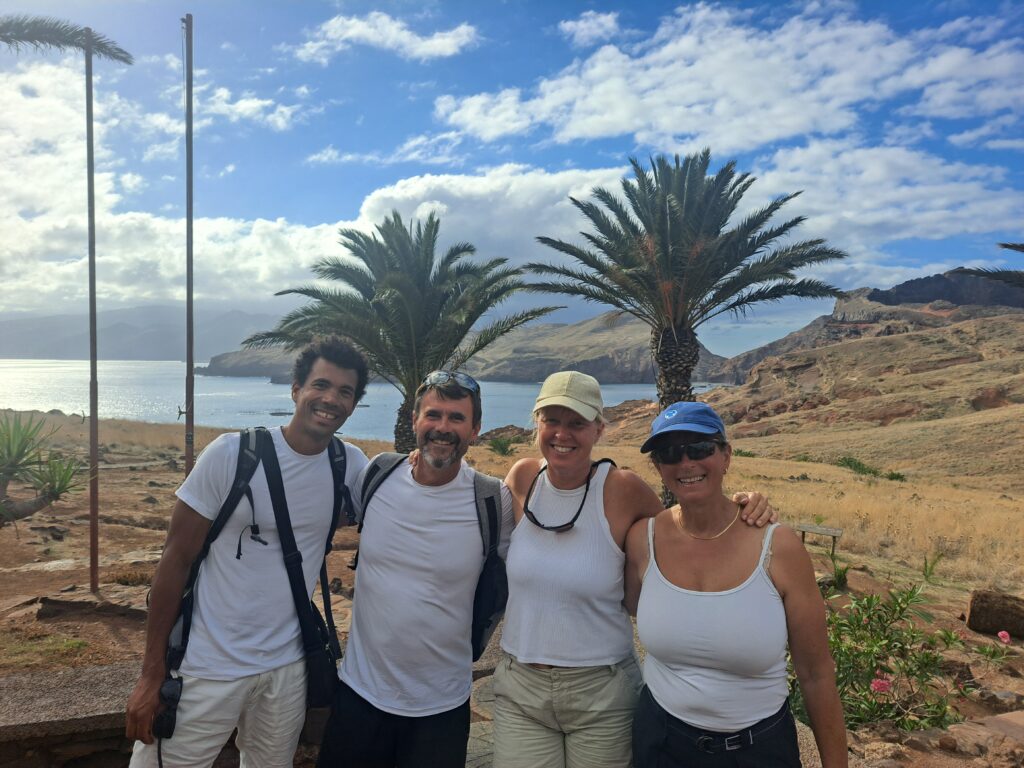
For following days, we rented a car to visit more places further away from the marina. After a short visit of Funchal, Madeira’s main city we went for a long walk along a trail called “Levada das 25 fontes” in the middle of the island. The “Levadas” are artificial irrigation canals built to convey water from the top of the mountains down to the fields. It is possible to walk along them and they bring you through the green nature of Madeira. There are even tunnels for the water (and hikers) some places.
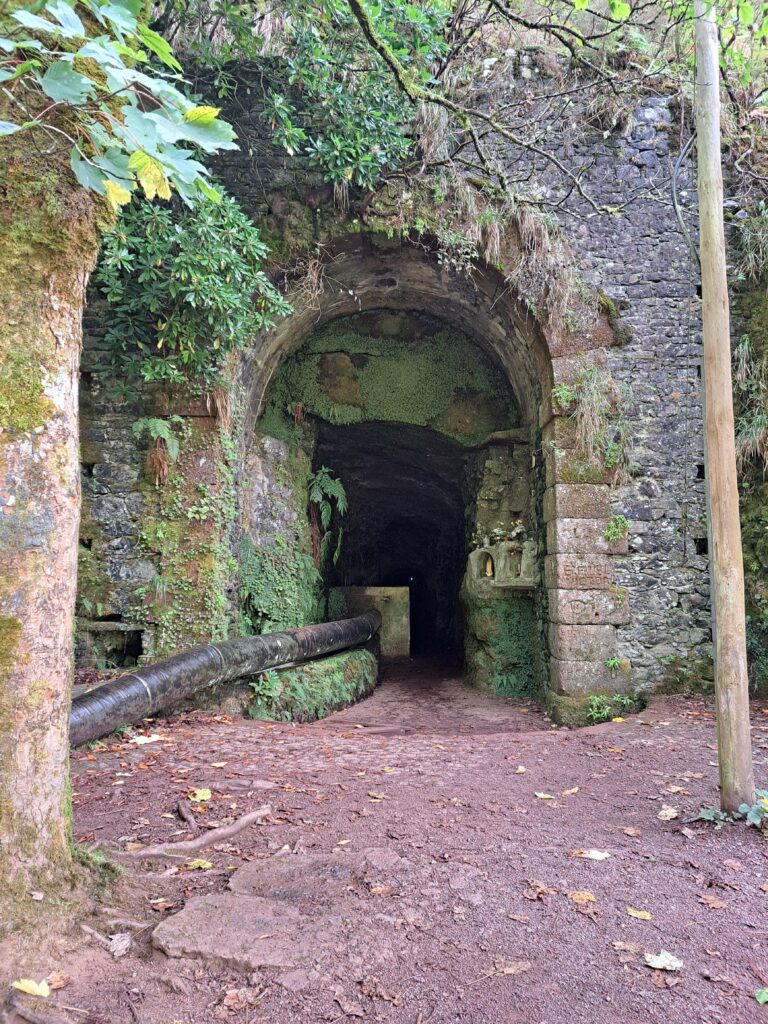
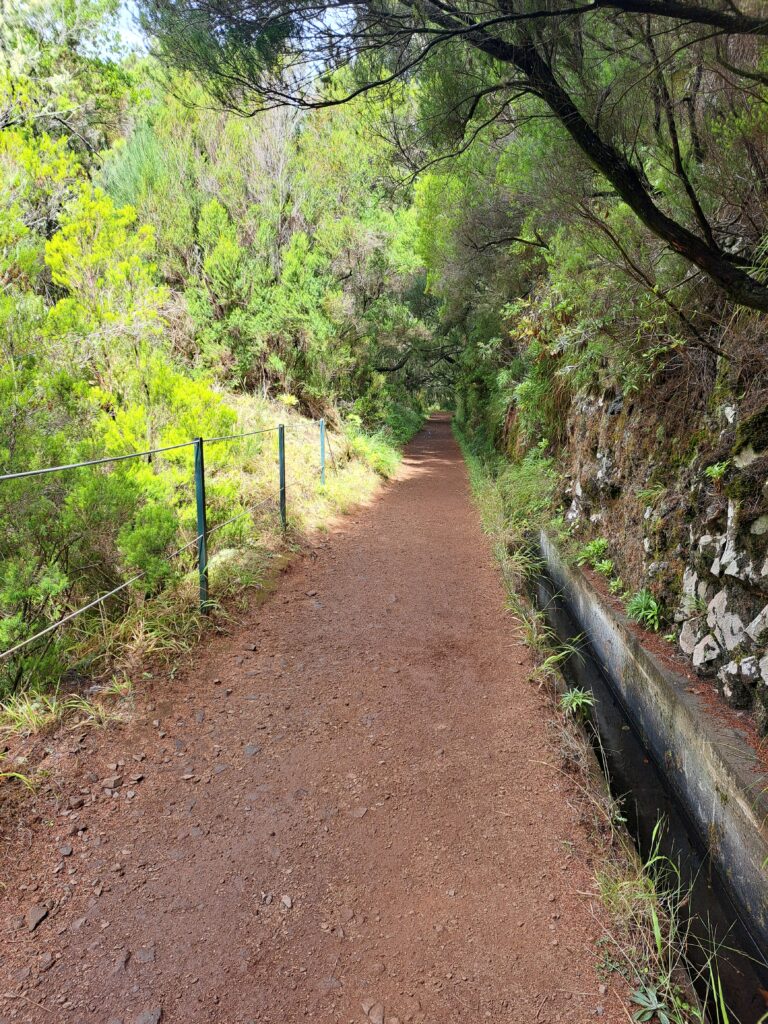
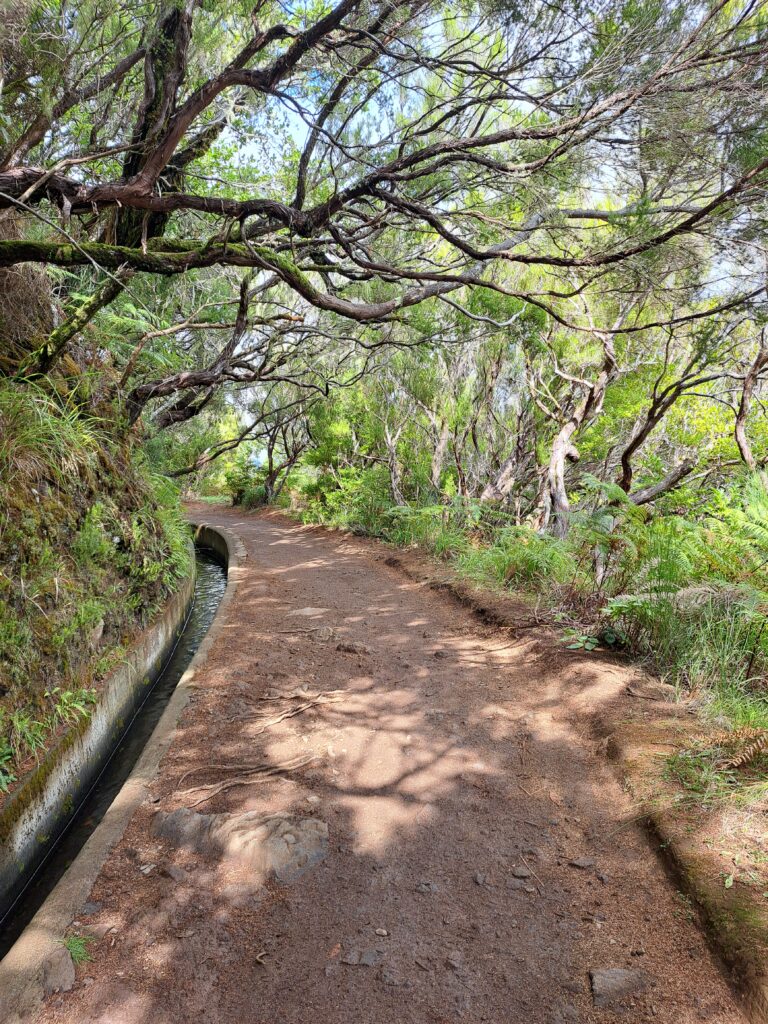
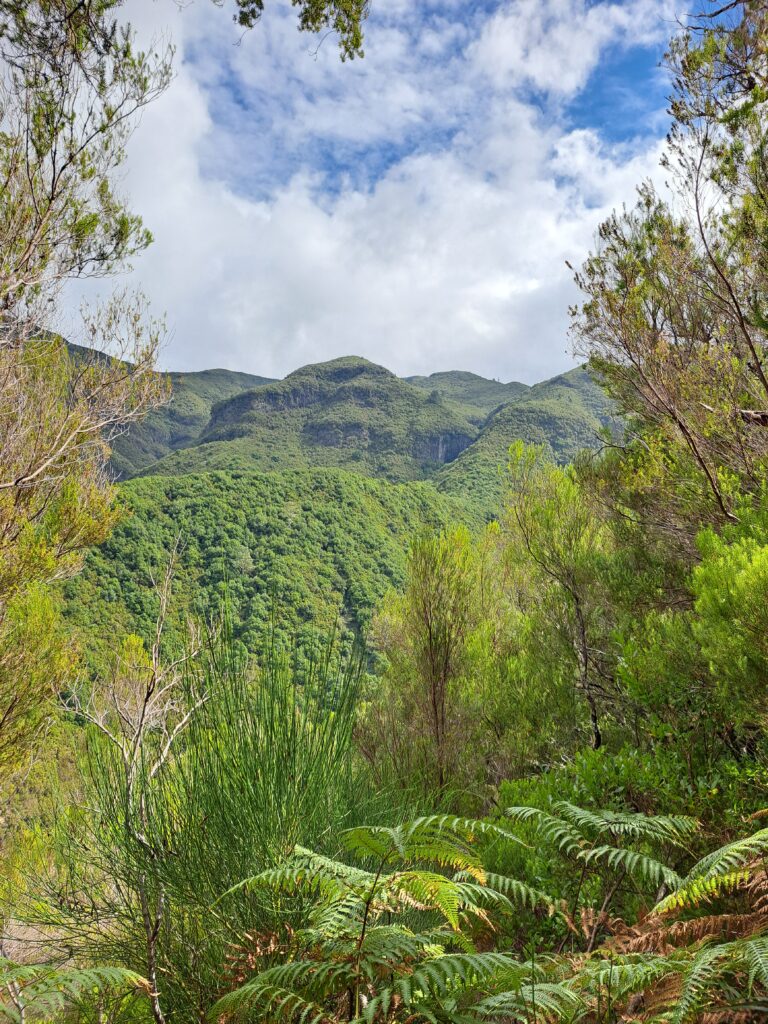
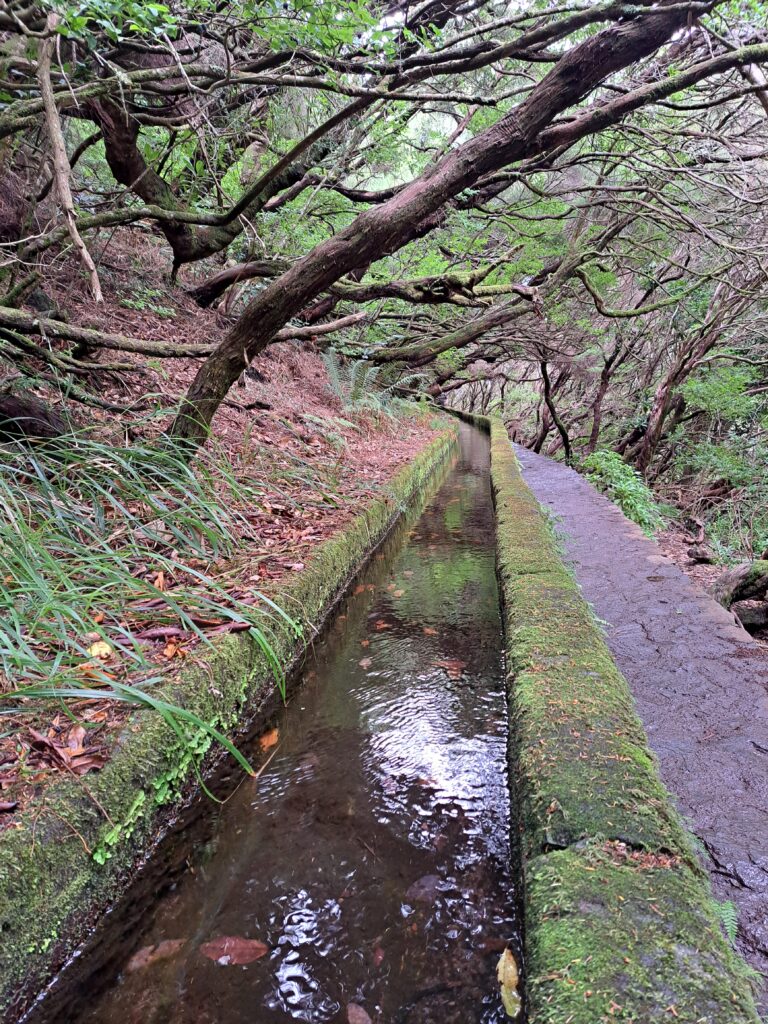
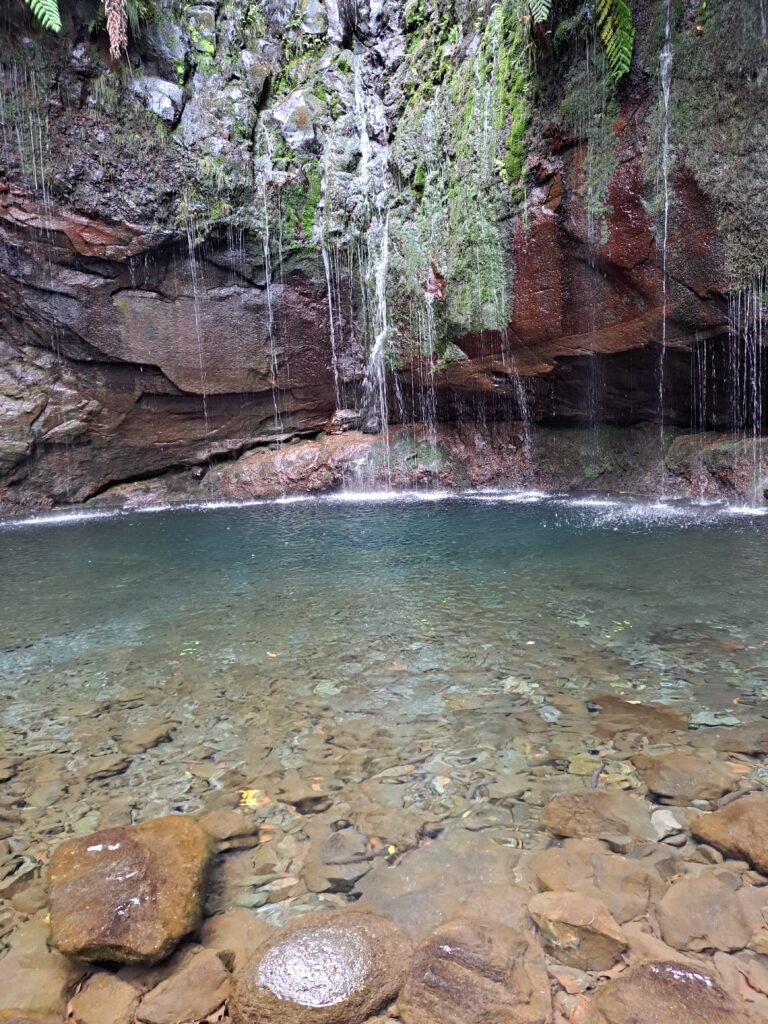
We took a drive on the north coast until Porto Monitz, known for its natural pools, and we made some stops at a few “Miradouros”. “Miradouros” are view points to admire the landscape.
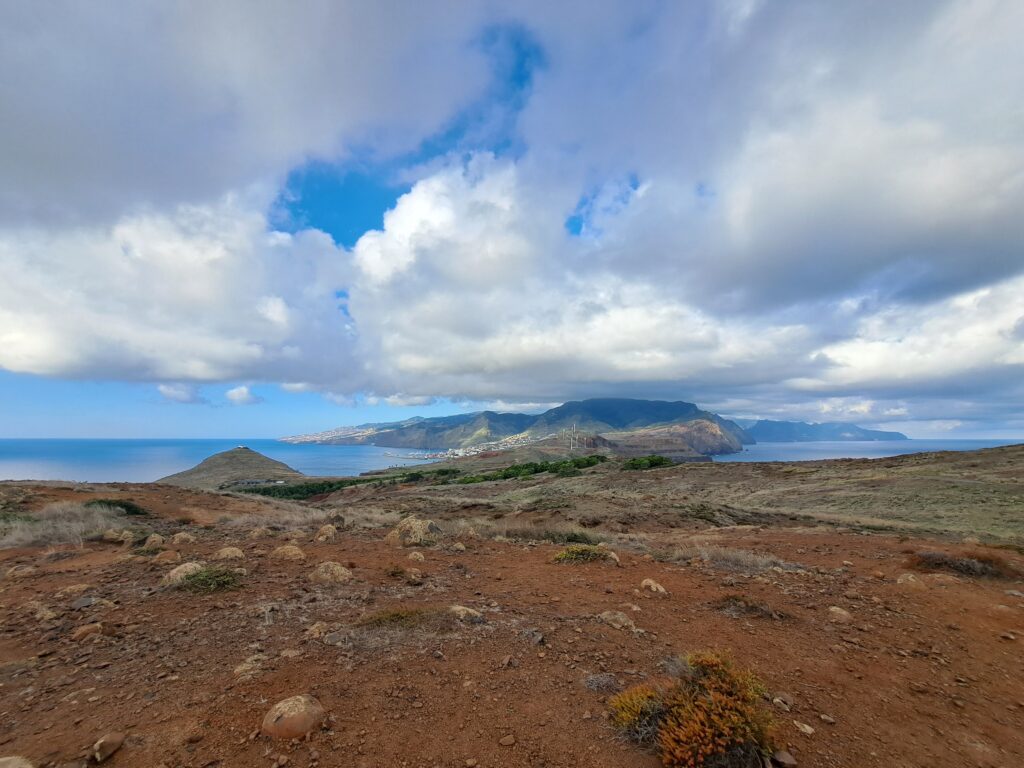
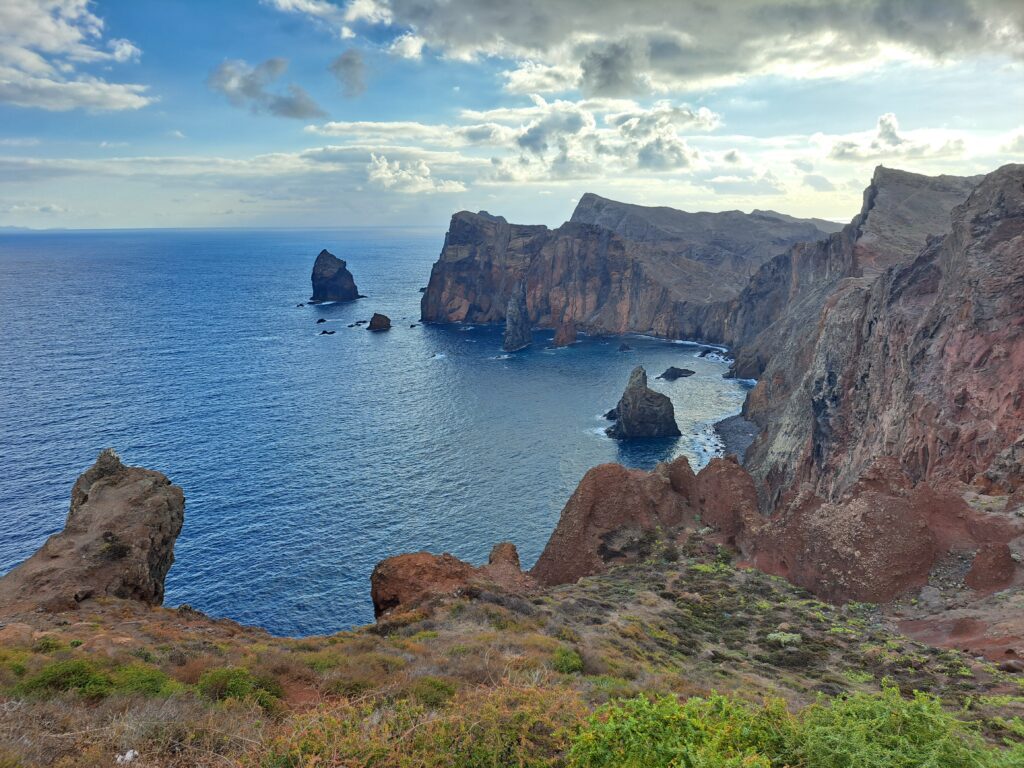
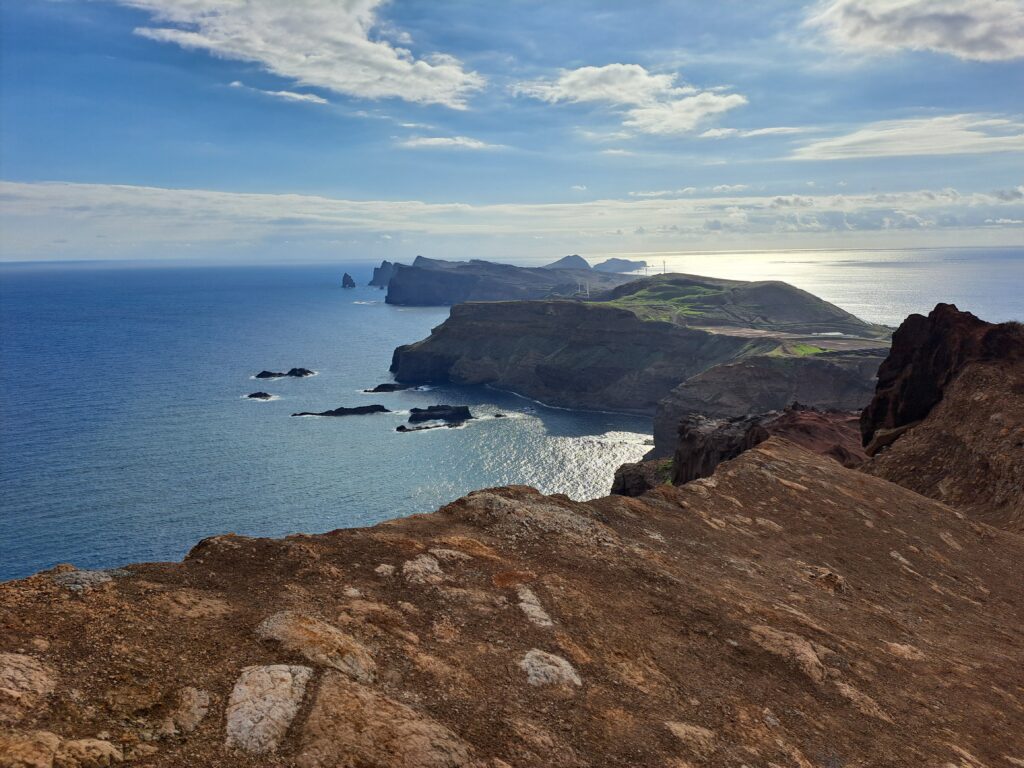
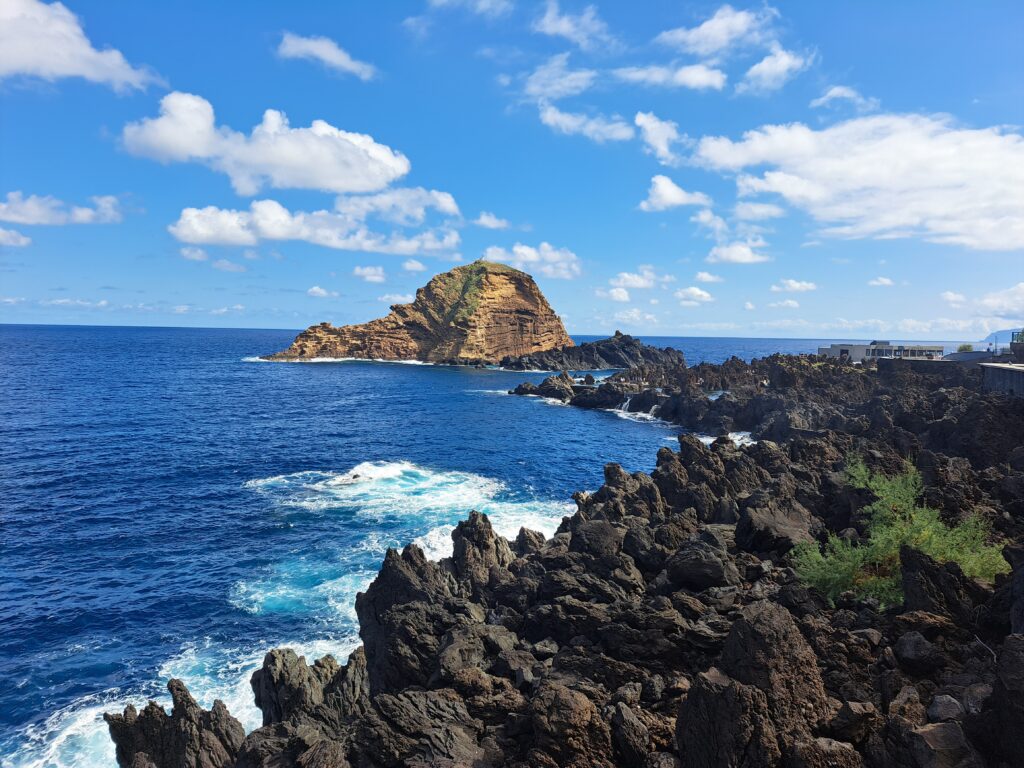
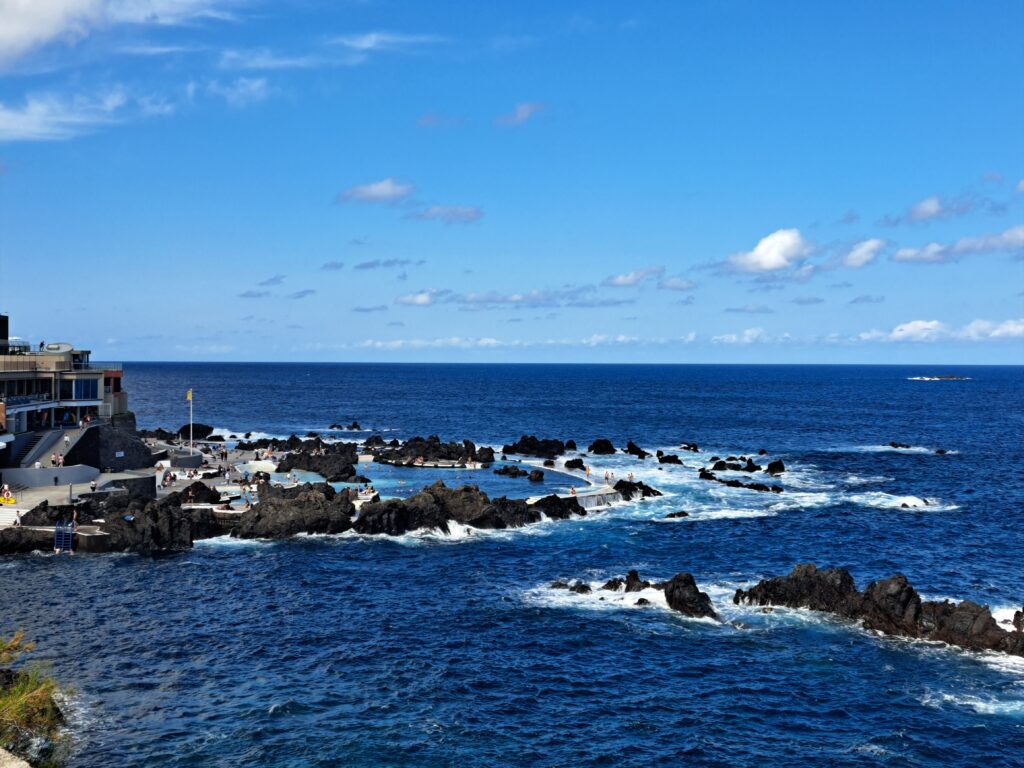
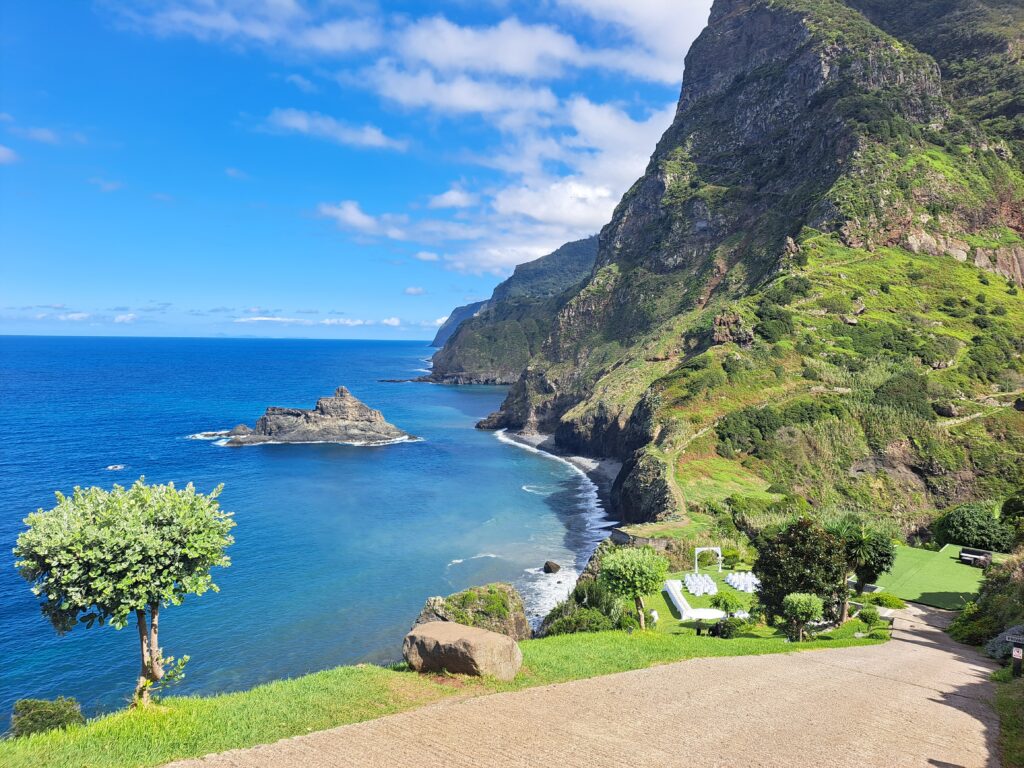
After these days as tourists, we started to look towards the horizon and plan our next sailing leg toward Lanzarote in the Canary Islands.
Our original plan was to leave on Sunday (October 5) but later we decided take a few days of rest and take the next weather window that looked better with winds around 9 to 10 m/s broad reach on Tuesday, Wednesday and Thursday. Sunday 9 am, we uploaded a fresh weather forecast and we saw that the conditions for that weather window got a bit worse. We were talking about 12 to 14 m/s. This is more or less the conditions we had when we left Cascais 2 weeks before but then we had the wind in the back. From Madeira to Lanzarote with this forecast we would be beam reach. That would have worked but we thought it was a good moment to be wise and try to make our life easier, so we returned to the original plan with lower wind and never mind if we have to do a part of the way on engine. We had a few things to do on the boat before having it ready to go but we completed these right away in the morning and left early in the afternoon. Full tank of water, nearly full tank of diesel plus four jerry cans of diesel on deck, enough food for a week and happiness.
Day 1 (October 5)
After we had been rolling most of the way from Cascais to Porto Santo we thought that sailing in the trade winds would be just rolling from one harbour to another. Instead we enjoyed a great sailing day with relatively little waves which we were not used to anymore. We had winds varying between 4 and 7 m/s with a few short periods of lower winds around 3 m/s during during which we went on engine. What a fantastic sailing day!
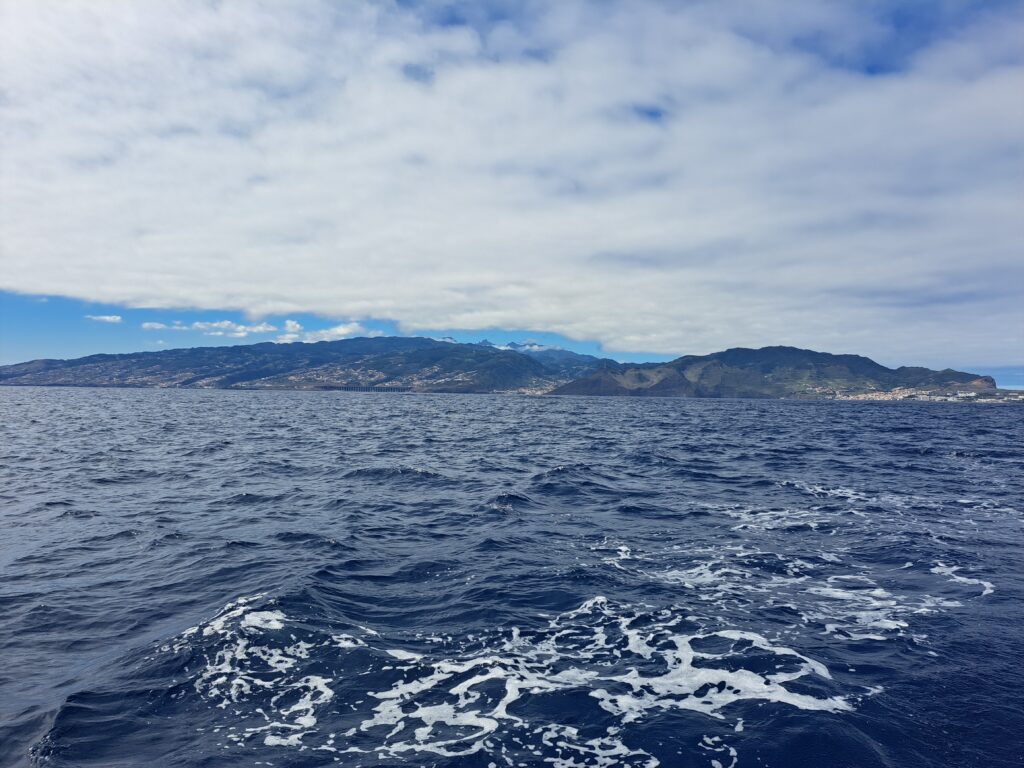
Day 2 (October 6)
The lights of Madeira disappeared in the horizon only during the night after more than 12 hours sailing. We got some squalls during the night but overall the sailing conditions remained very good.
As often happens at sea, we had the chance to enjoy a beautiful sunrise! Actually, only Emilien saw this because Maria was asleep (or trying to sleep) those hours.
After breakfast we decided to test the hydrogenerator that had been a concern since we left Sweden: we bought it second hand on internet during fall 2024. It seemed in very good conditions and it was rotating perfect so we just stored it in a dry storage for the winter. When the time came to pack it in the boat in April we noted that the shaft was impossible to rotate. We opened it and rapidly understood why it was not turning: the stator plates had rusted, expanded and got stuck against the rotor. We managed to extract the rotor with a little bit of violence so we could grind off the rust from the rotor and stator. It didn’t feel like a professional work at all but what else? In any case we got the rotor to rotate again freely without contact against the stator. We checked the winding insulation and it was good and tested it with a loose battery and we were able to charge it.
The two pictures show how the generator looked like when we opened it in April and after cleaning.
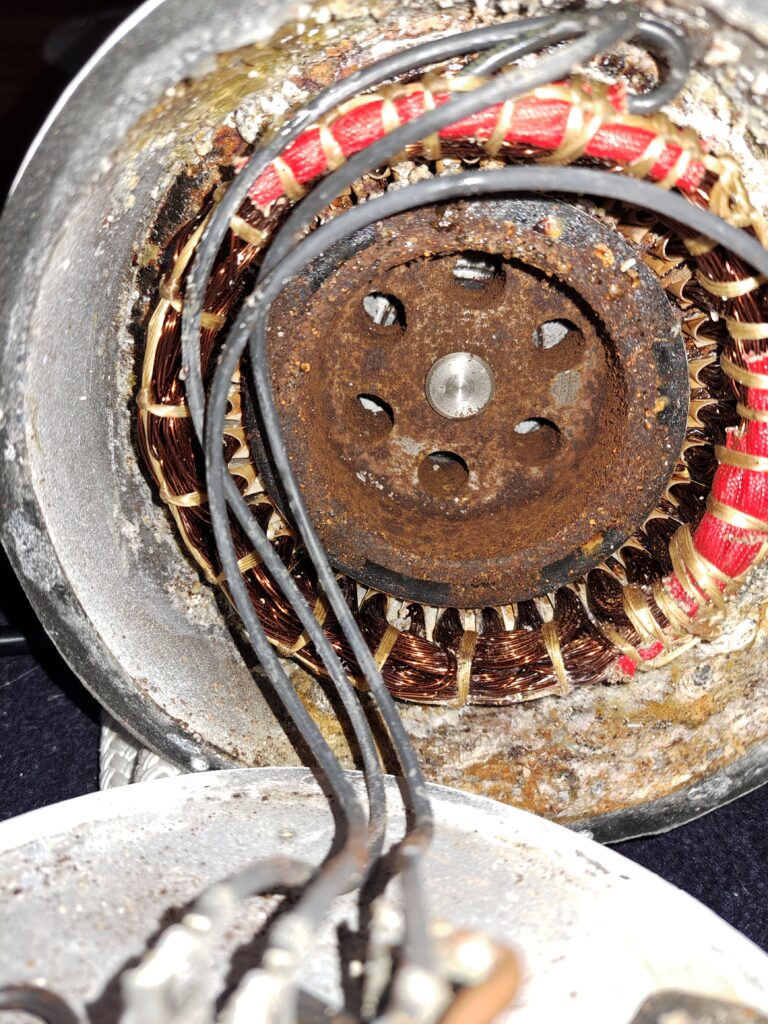
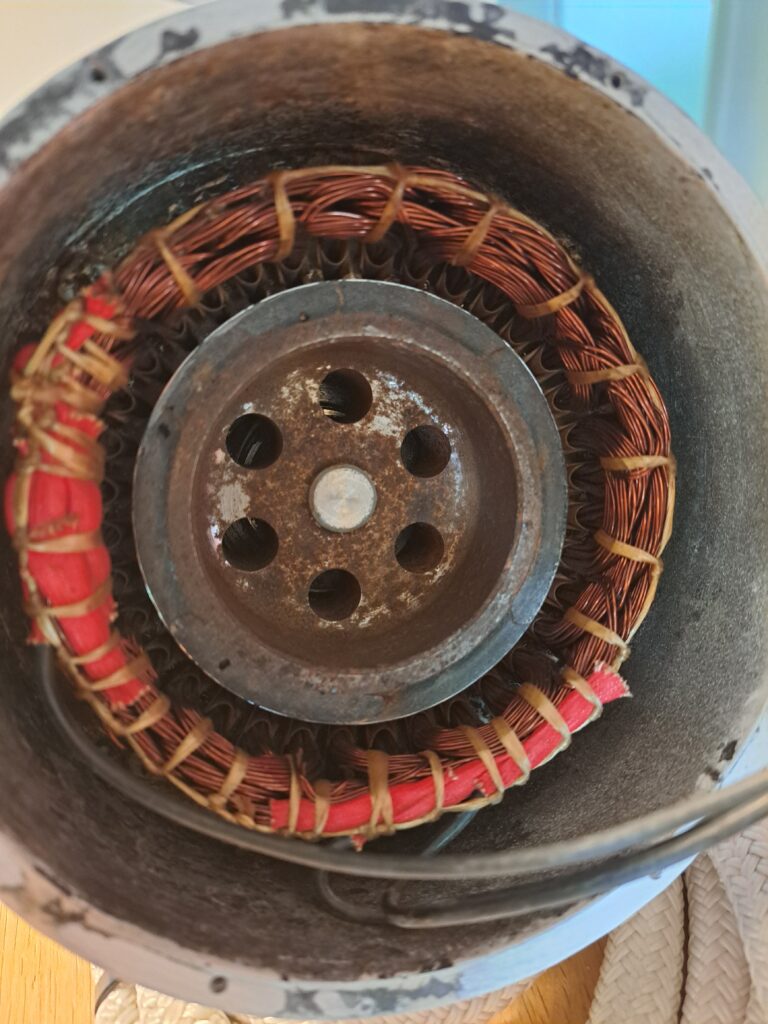
So here we were somewhere in the Atlantic Ocean with that generator and we decided to give it try. And we got many ampere out of it! The generator didn’t start to smoke neither the fuse blew out! We’ll probably open it again before crossing the Atlantic to make sure everything went well but it felt really good to see that we can get a lot of current out of it.
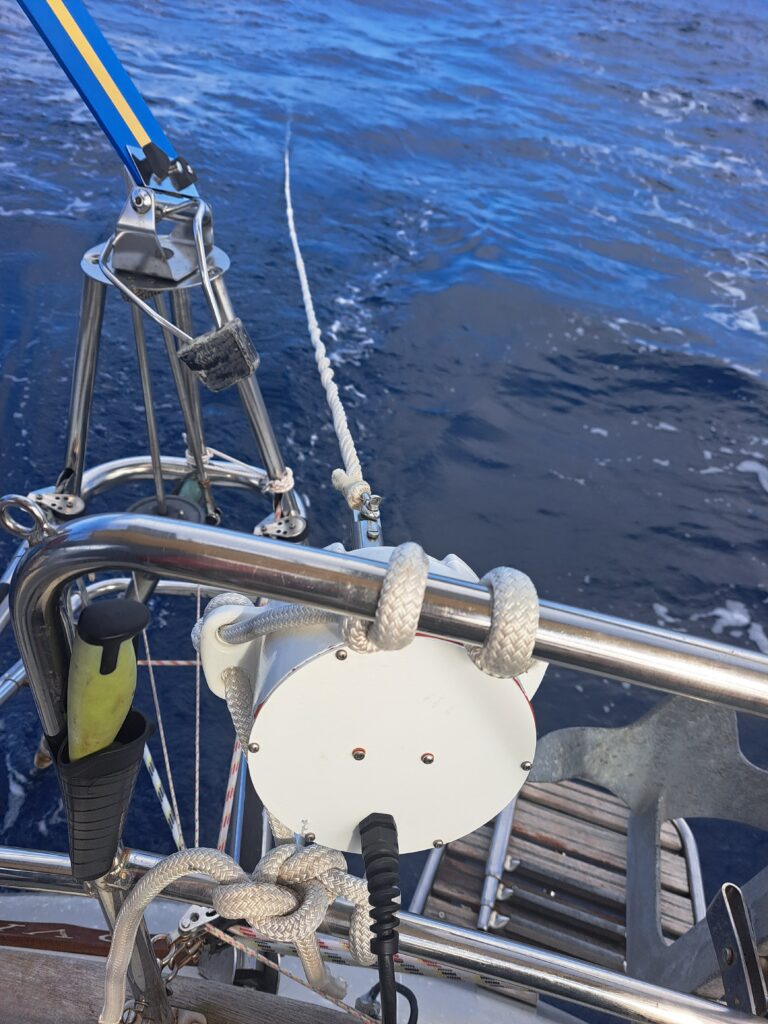
End of day we got the visit of a group of dolphins. These were striped dolphins. Same size and as playful as the common dolphins we met on the road until then. That was a nice show for the end of the day, right before a wonderful sunset.
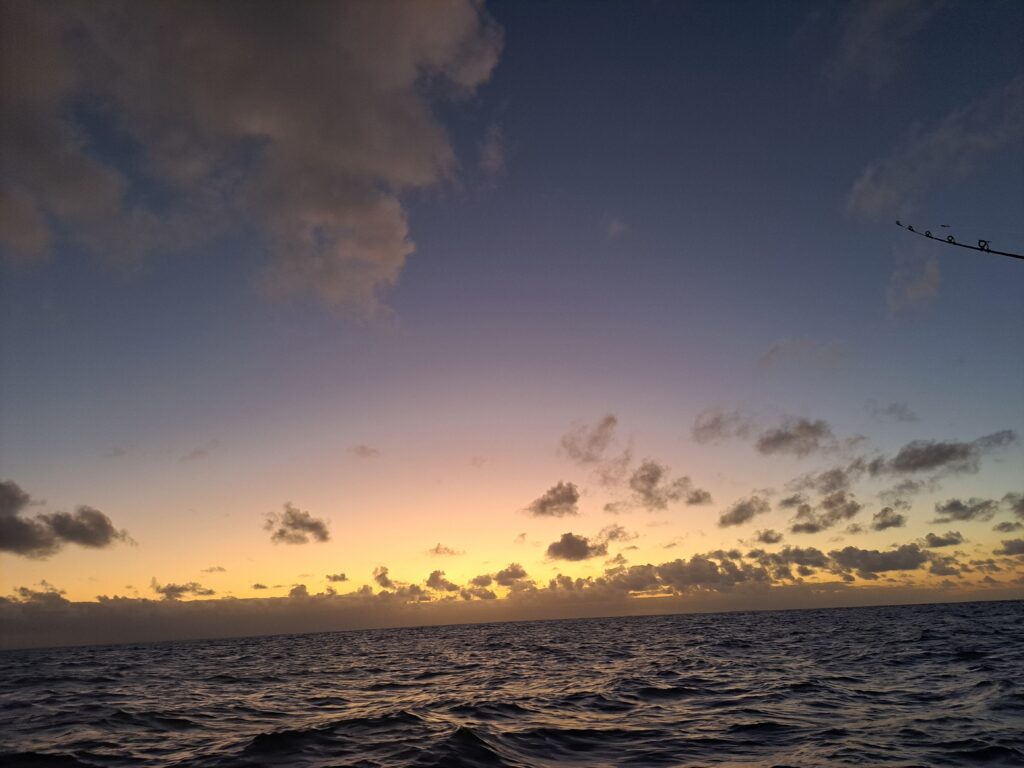
Day 3 (October 7)
The wind increased during the night to 8 – 9 m/s from the side. We dropped the mainsail to ease the work of the autopilot that was fighting hard to steer an unbalanced boat and we continued with full genoa. We kept this setup for the whole day. Mid afternoon, the wind increased to 9 – 11 m/s and finally 12 – 14 m/s in the evening so we put a reef in the Genoa and went like that until we reached Marina Rubicón.
While we could spot Madeira from 40 Nm, we could hardly spot Lanzarote from 15 Nm. The island remained just a shape ahead of us that we could hardly distinguish from the clouds until sunset when the island became a stripe of lights.
We reached our destination, Marina Rubicón on Lanzarote, after 56 hours of sailing with an average speed of 5 knots. The marina was surrounded by restaurants and we managed to order Indian food just before they closed the restaurant kitchen.
From Maria’s diary, Monday October 6 at 10 PM: How beautiful! The moonlight lands in the waves and creates a lit road reaching the boat, and other times just a scene which we may find ourselves in the middle of. The clouds are also lit and the borders resemble soft cotton while the dark interiors get the shape of fantasy animals. Stars shine between the clouds. We race forward in 8 m/s broad reach by main sail and reefed genua. Sails are balanced and the windvane is able to steer. According the the last forecast from this evening, the wind should remain like this until tomorrow evening, lovely. I see ships on the AIS now, for the first time since we left Madeira behind. Earlier we actually heard VHF weather broadcasts concerning the Canary Islands more than 100 Nm away. Could we really have heard it all the way from there? But perhaps they are sending from masts on top of high mountains.
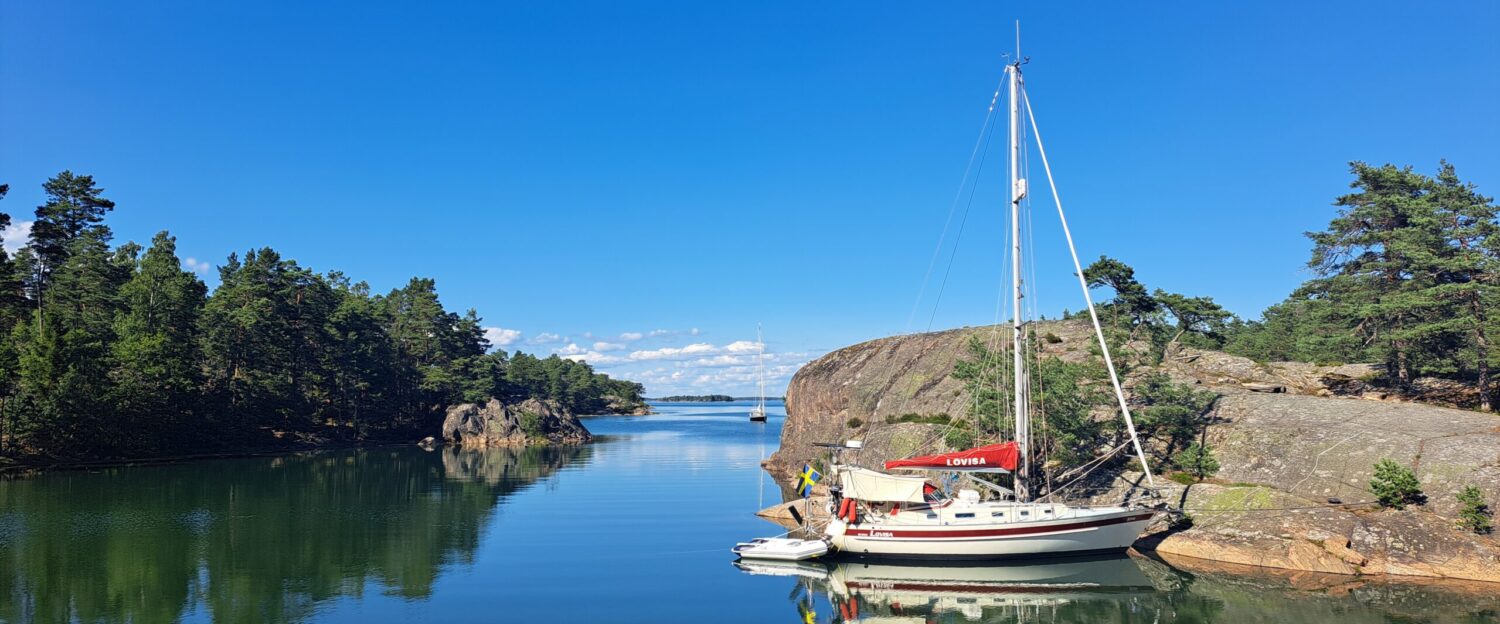
Amazing! Thank you again for sharing your wonderful journey.
Merci Nico!
Bonjour Maria, bonjour Emilien,
Merci pour ces belles photos et vidéos.
Ces dauphins sont incroyables ! Ils n’ont pas peur de se faire taper par le bateau, à rester aussi près !
Incroyable aussi que vous ayez réussi à nettoyer les bobines d’un tel état crasseux !
Bonne continuation en tout cas !
Bisous !
Merci Joseph! Oui les dauphins sont habiles ! On est un peu inquiets pour eux quand il y a des vagues et que l’avant du bateau monte et descend avec eux en dessous … mais bon apparemment ils gèrent 🙂
Good to read you are doing well !
Greets from Netherlands
Thank you Philip ! Now we are enjoying the Canaries and preparing for the big crossing! It’s getting very close !